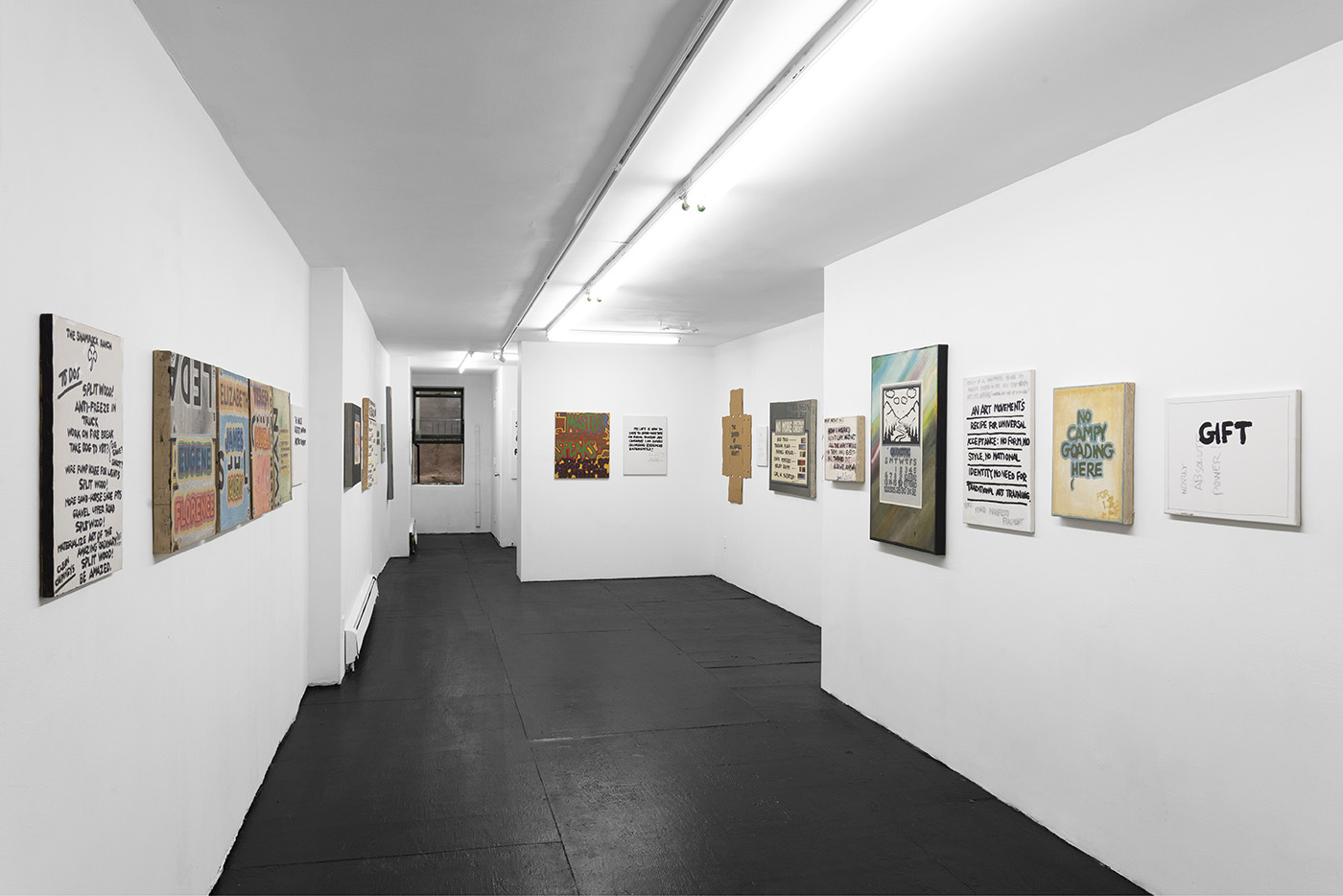
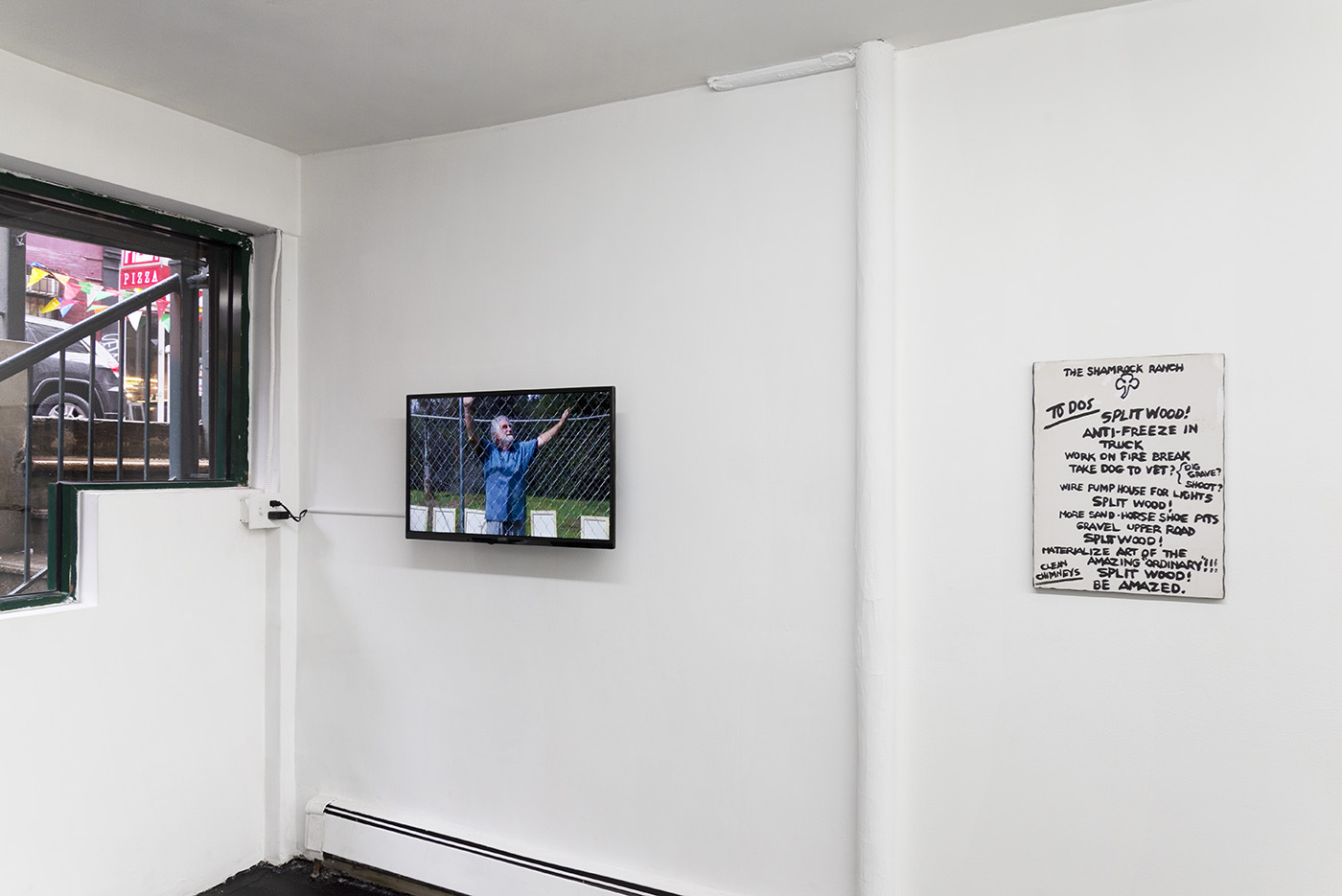
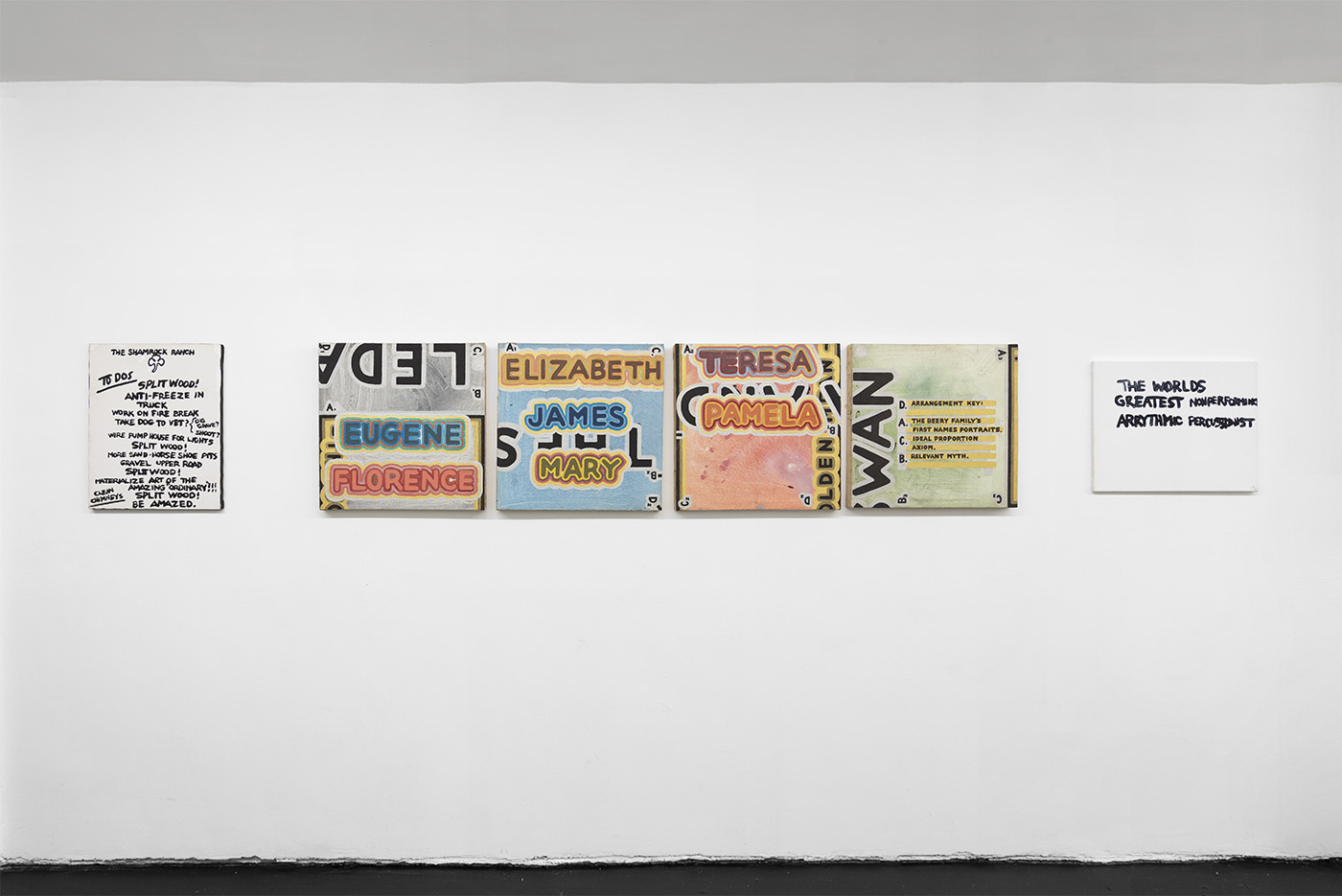
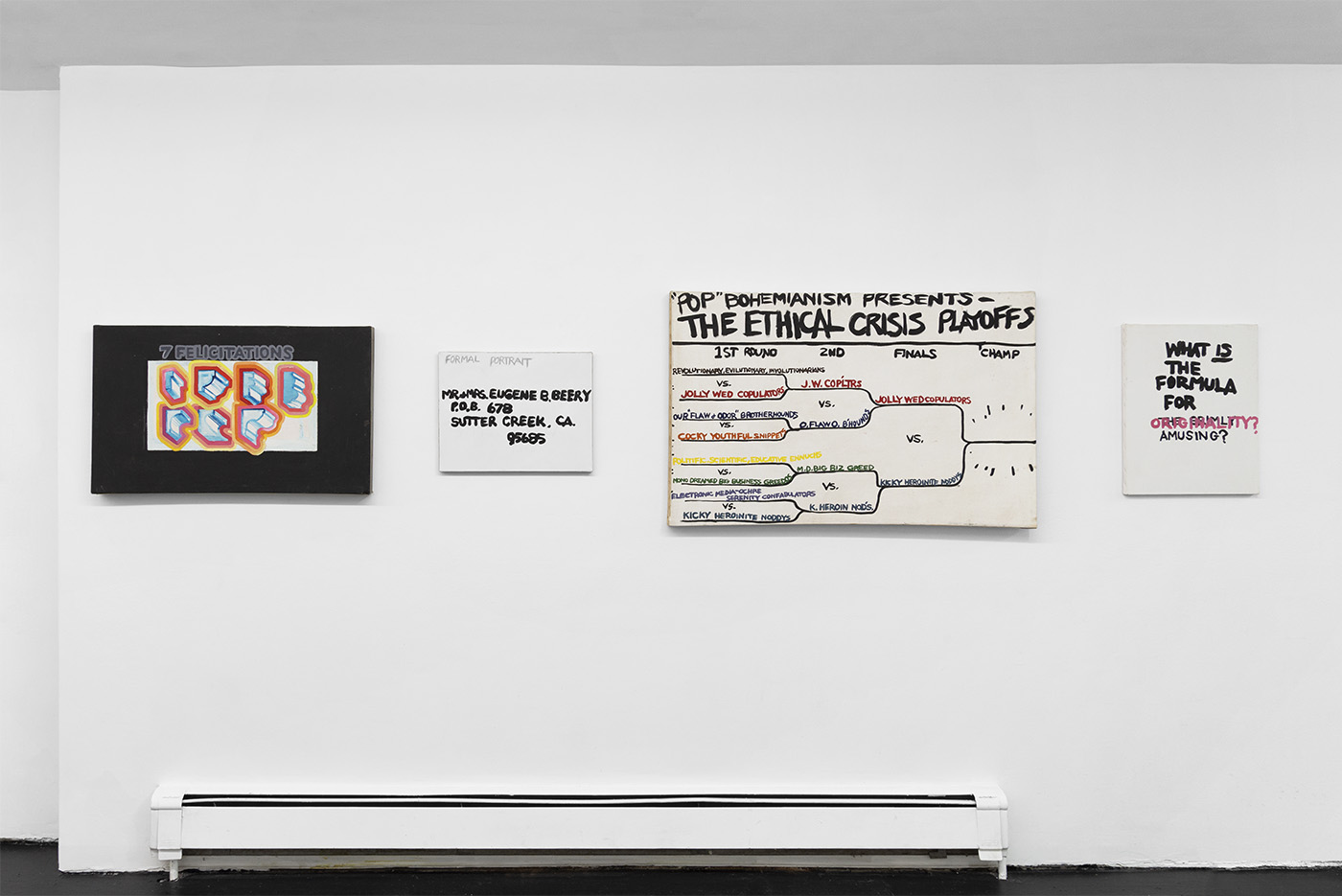
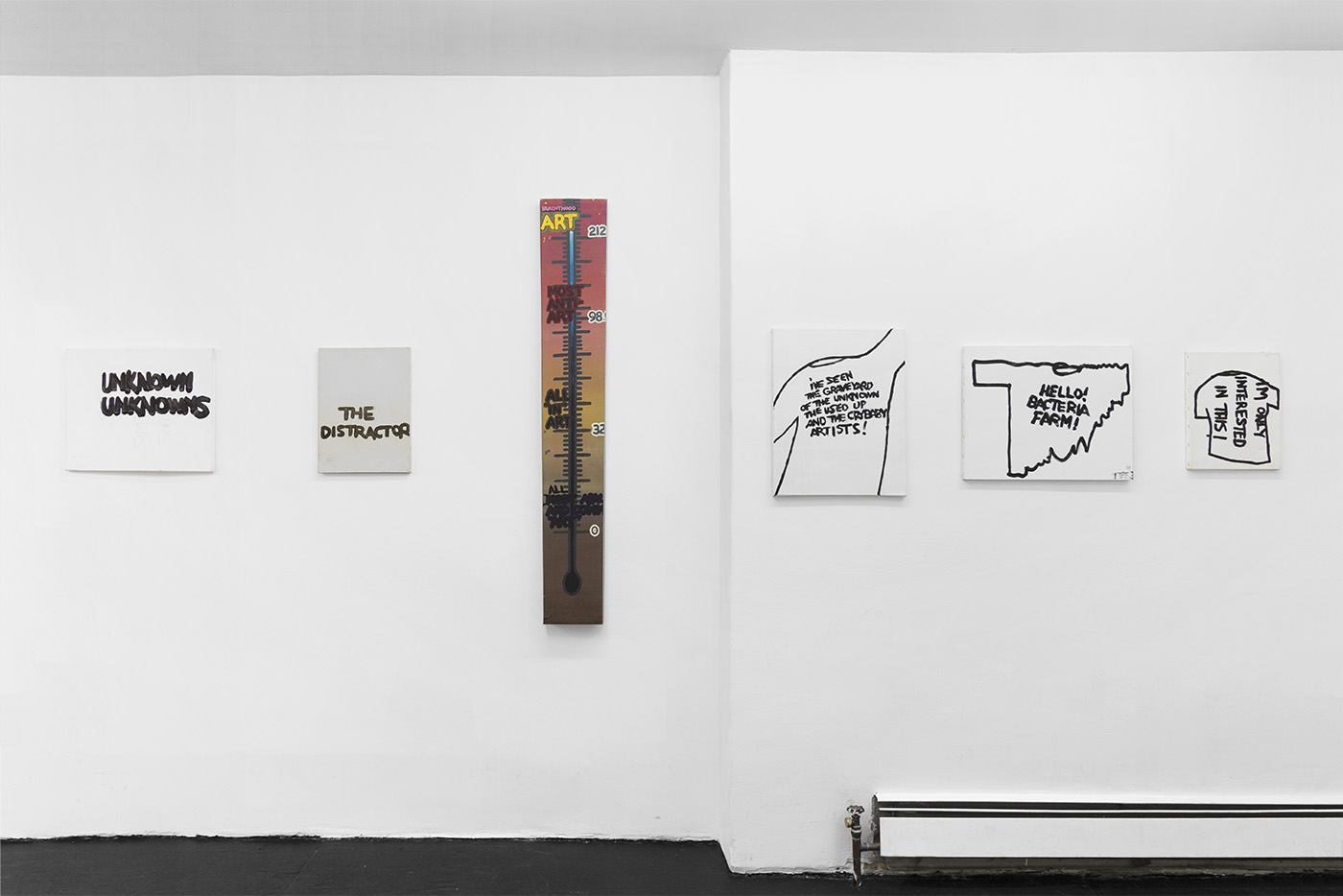

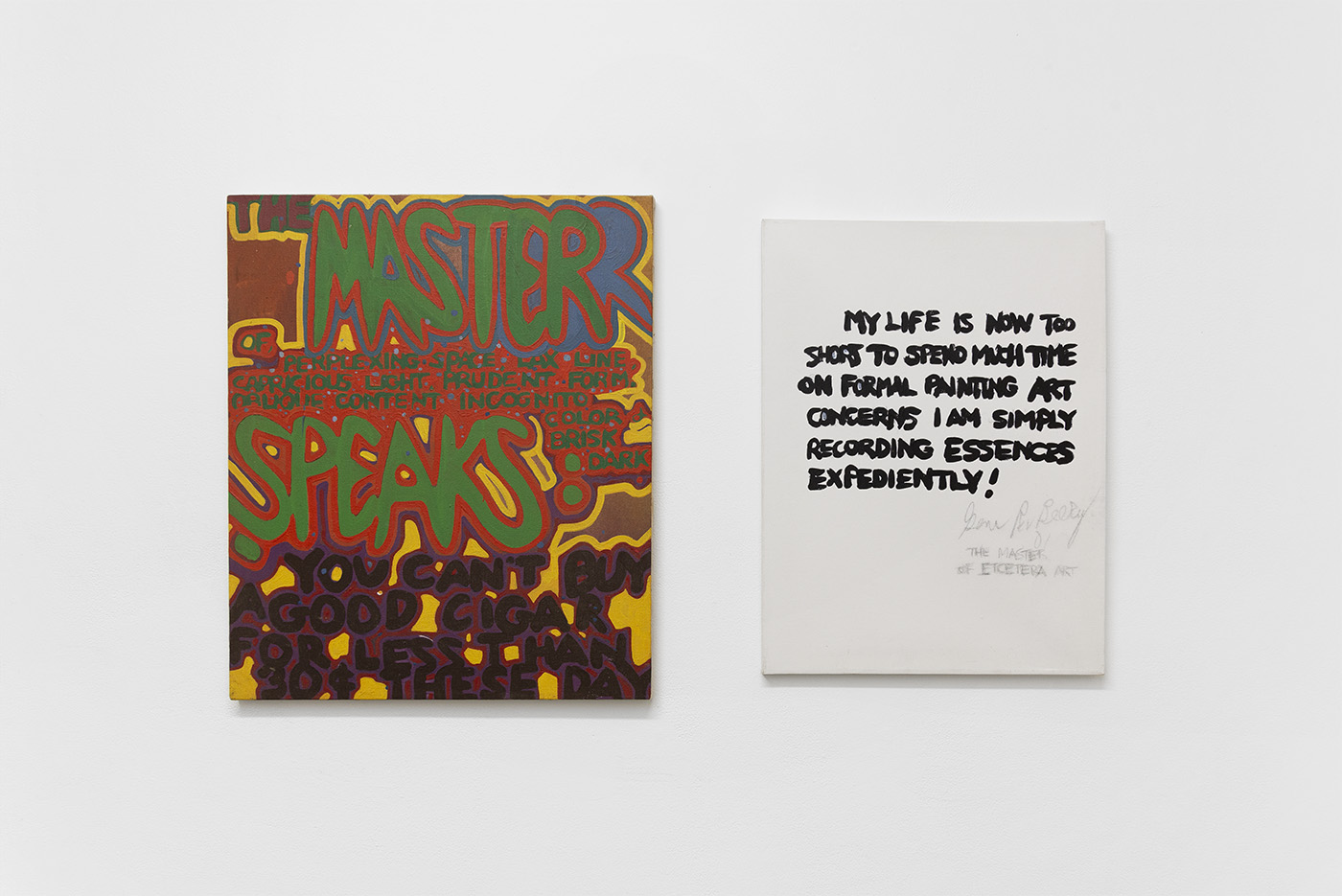
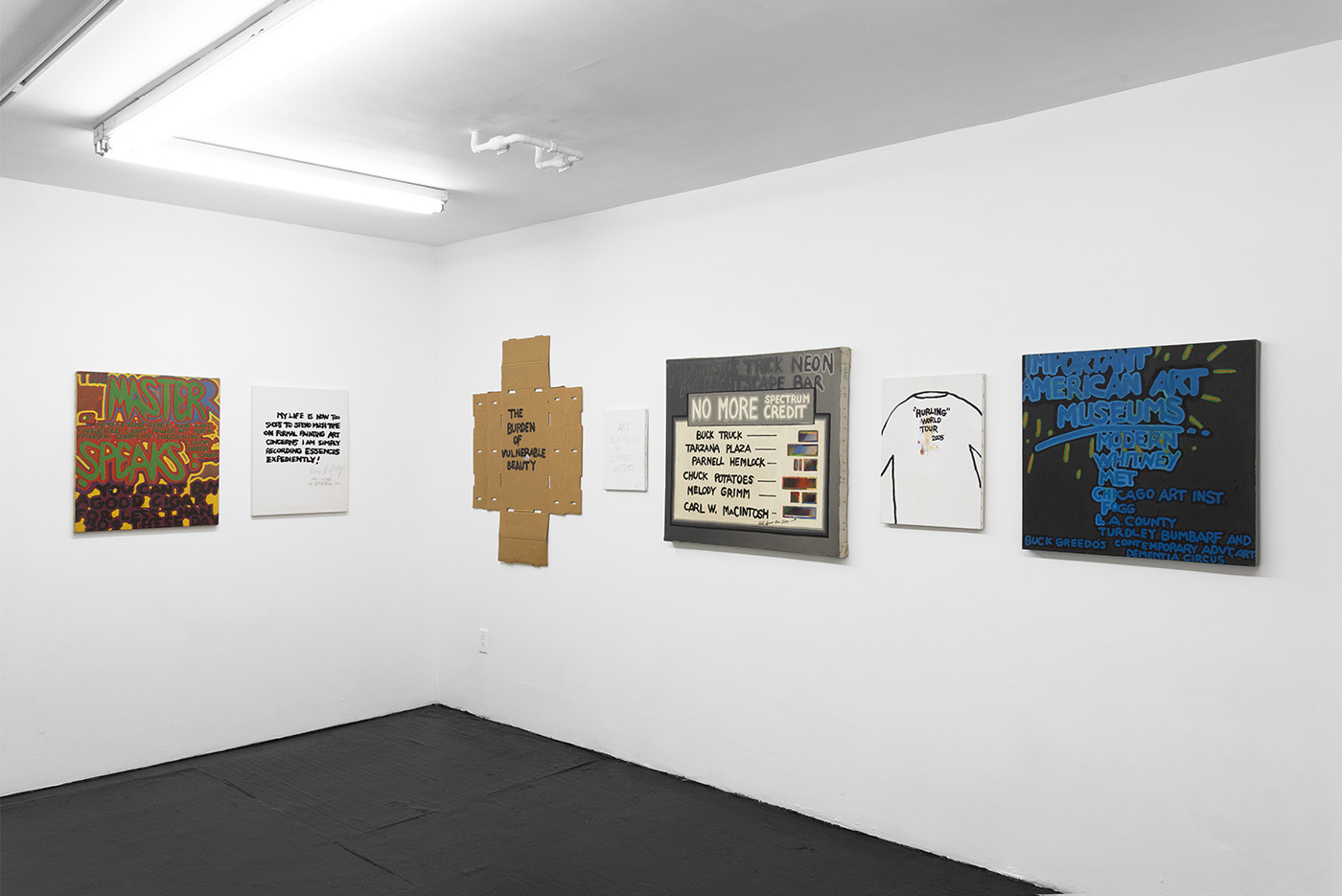
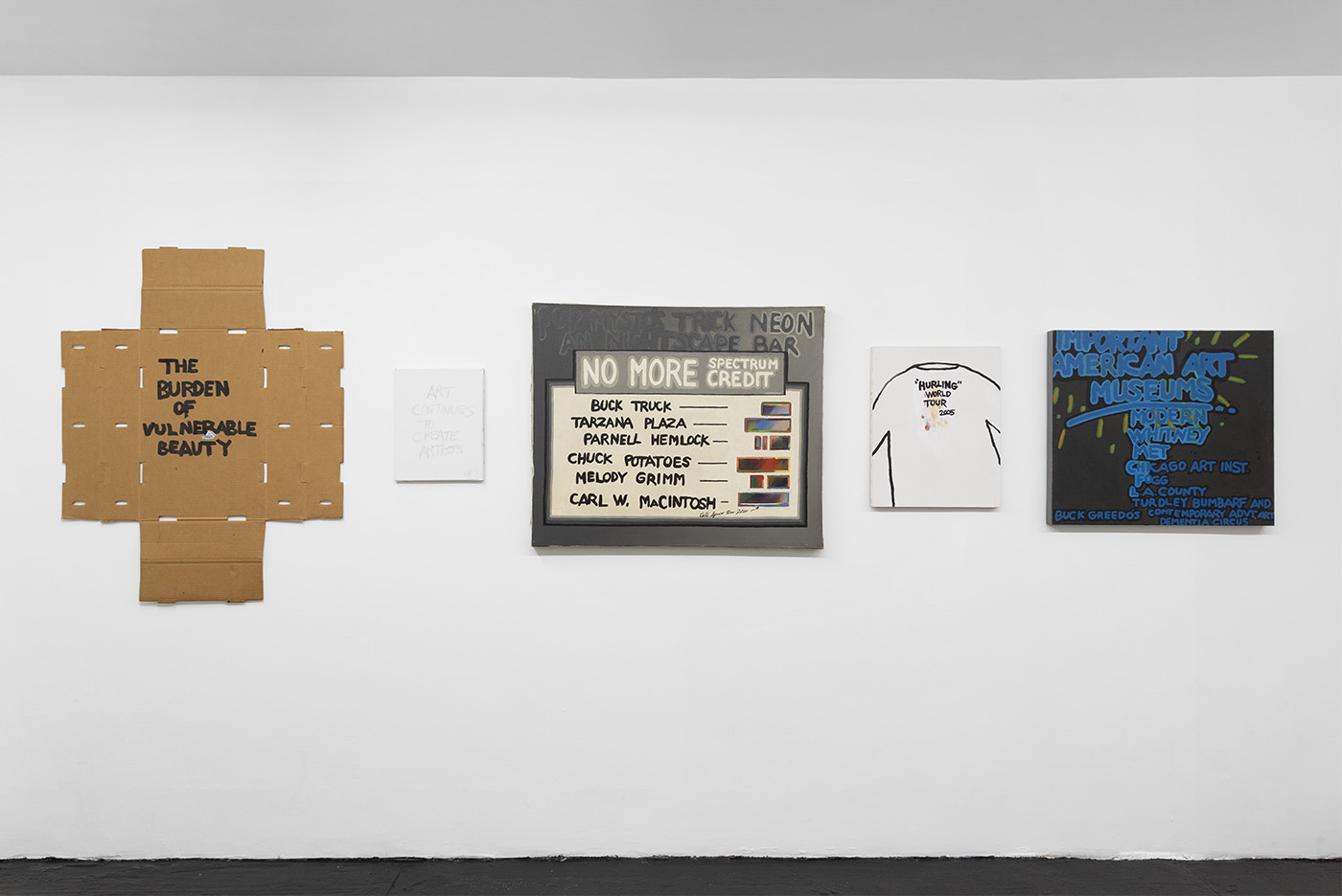
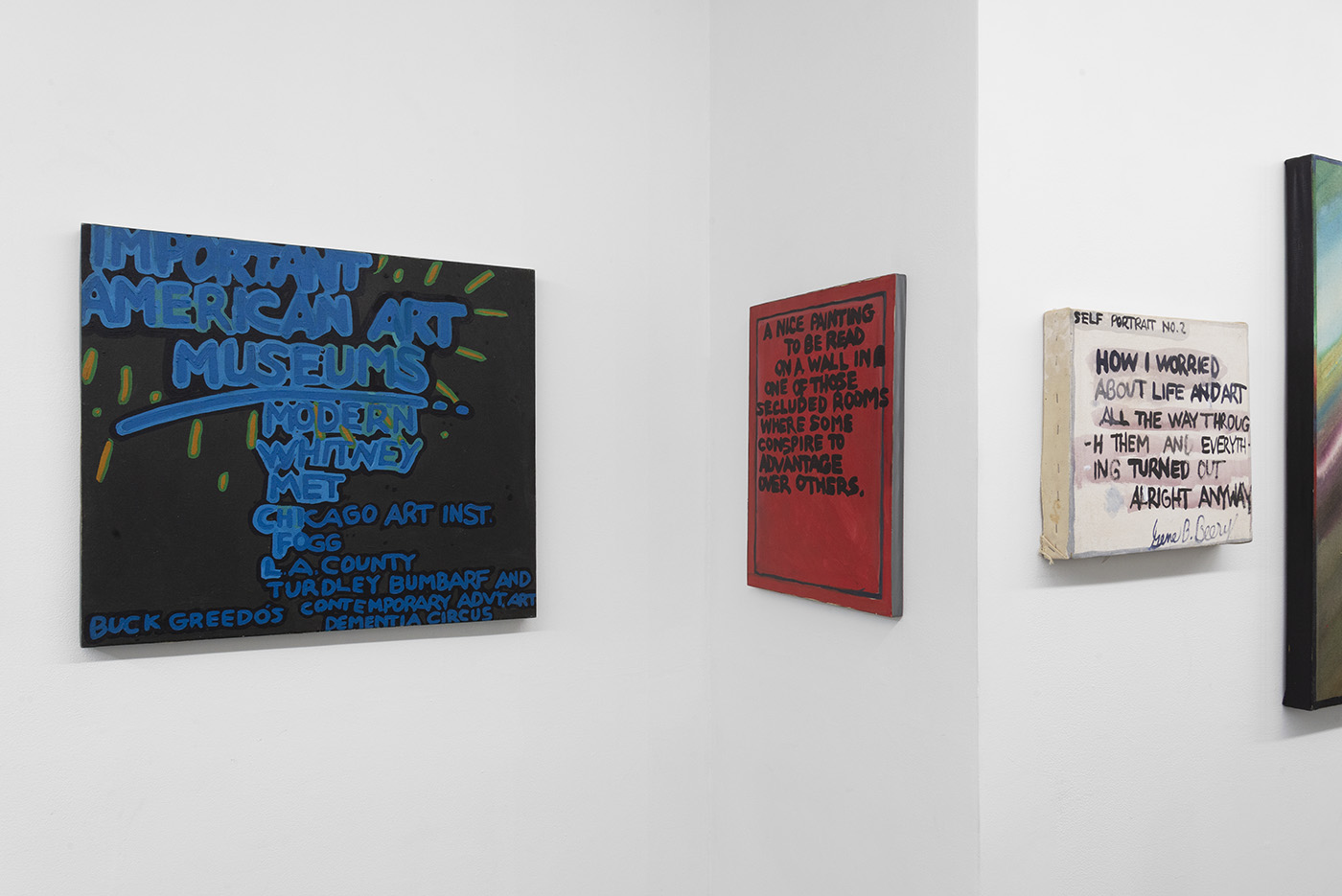
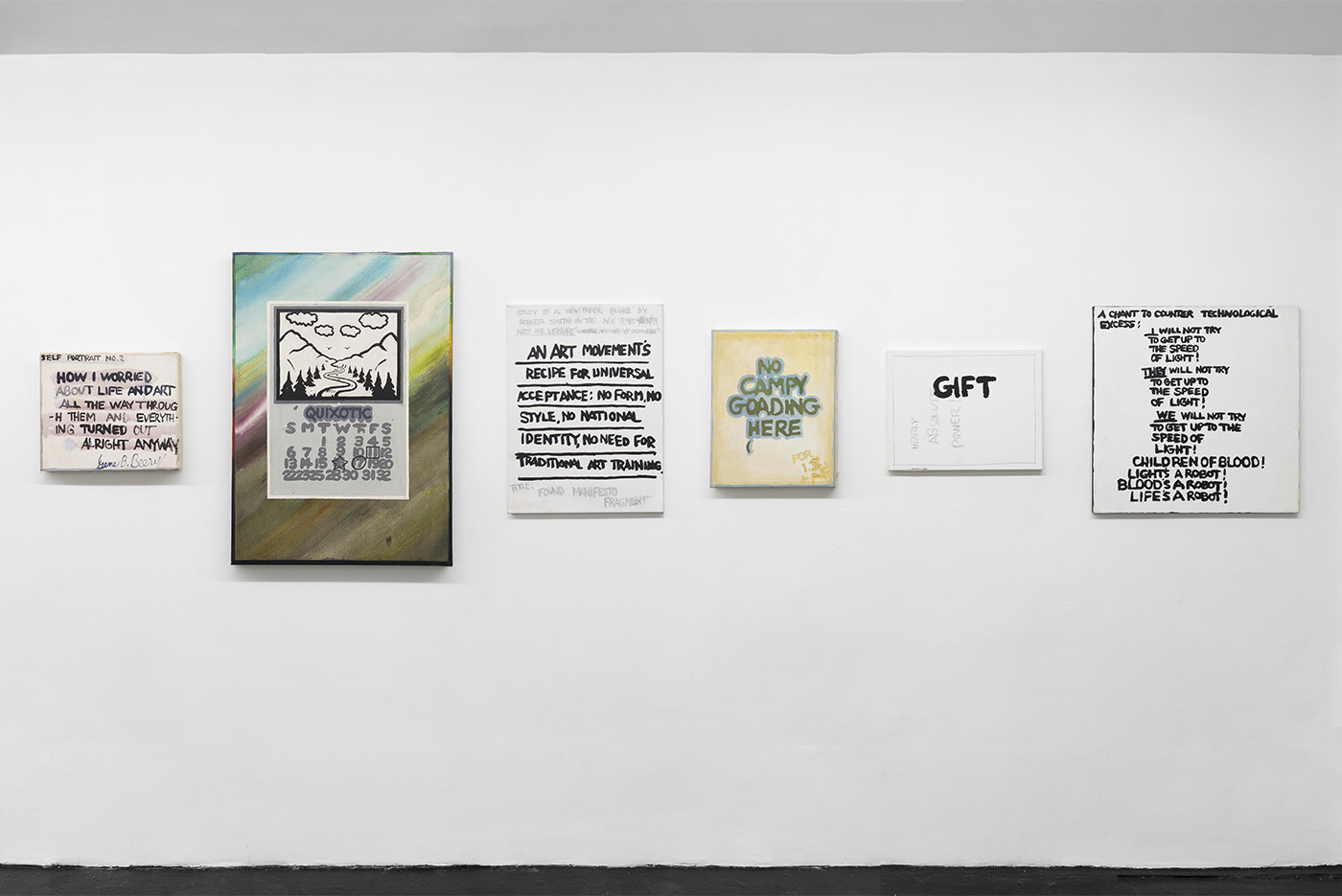
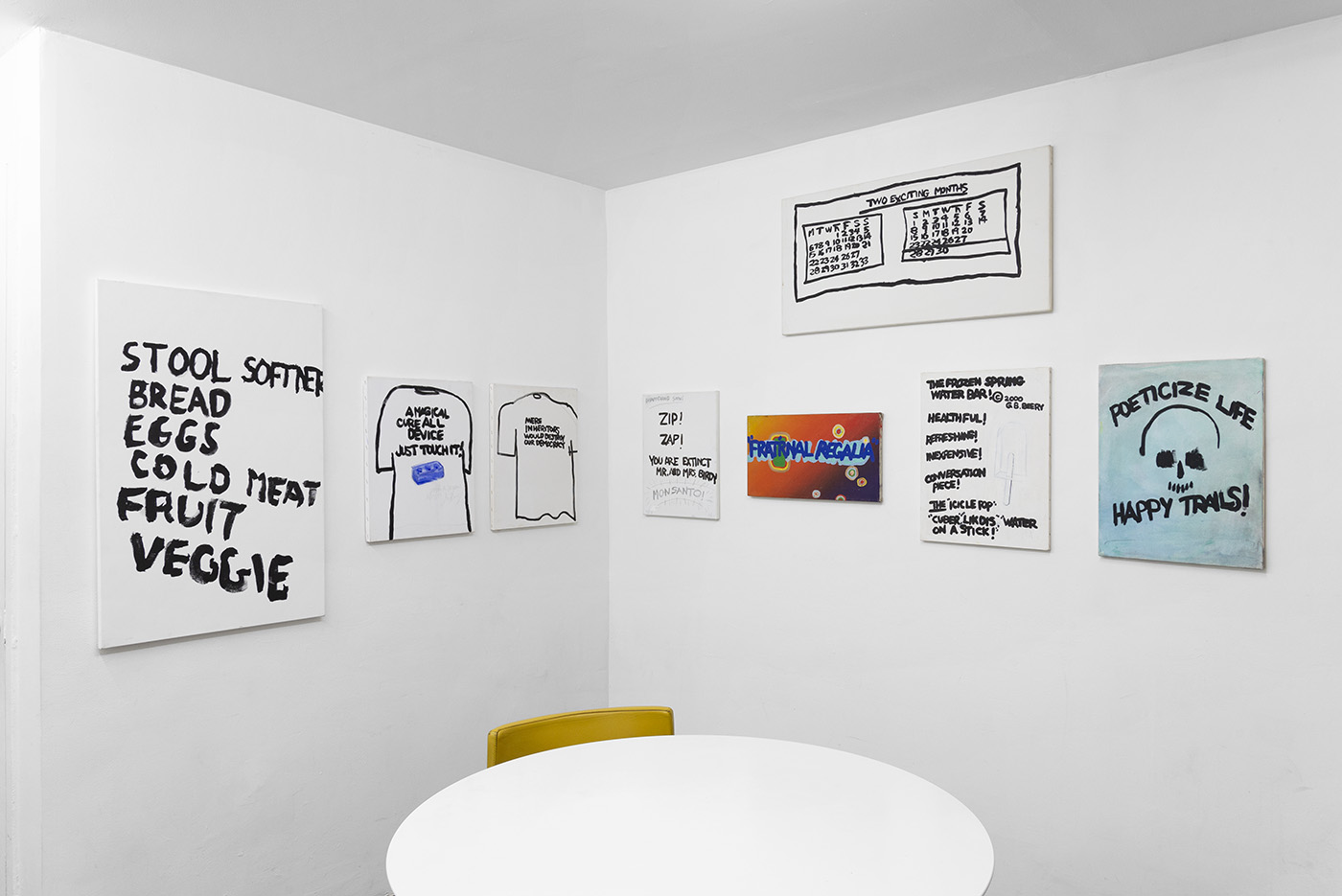
‘Your Move’, 2000s
‘Sanctuary’, 2000s
‘Burning Cardboard’, 2000s
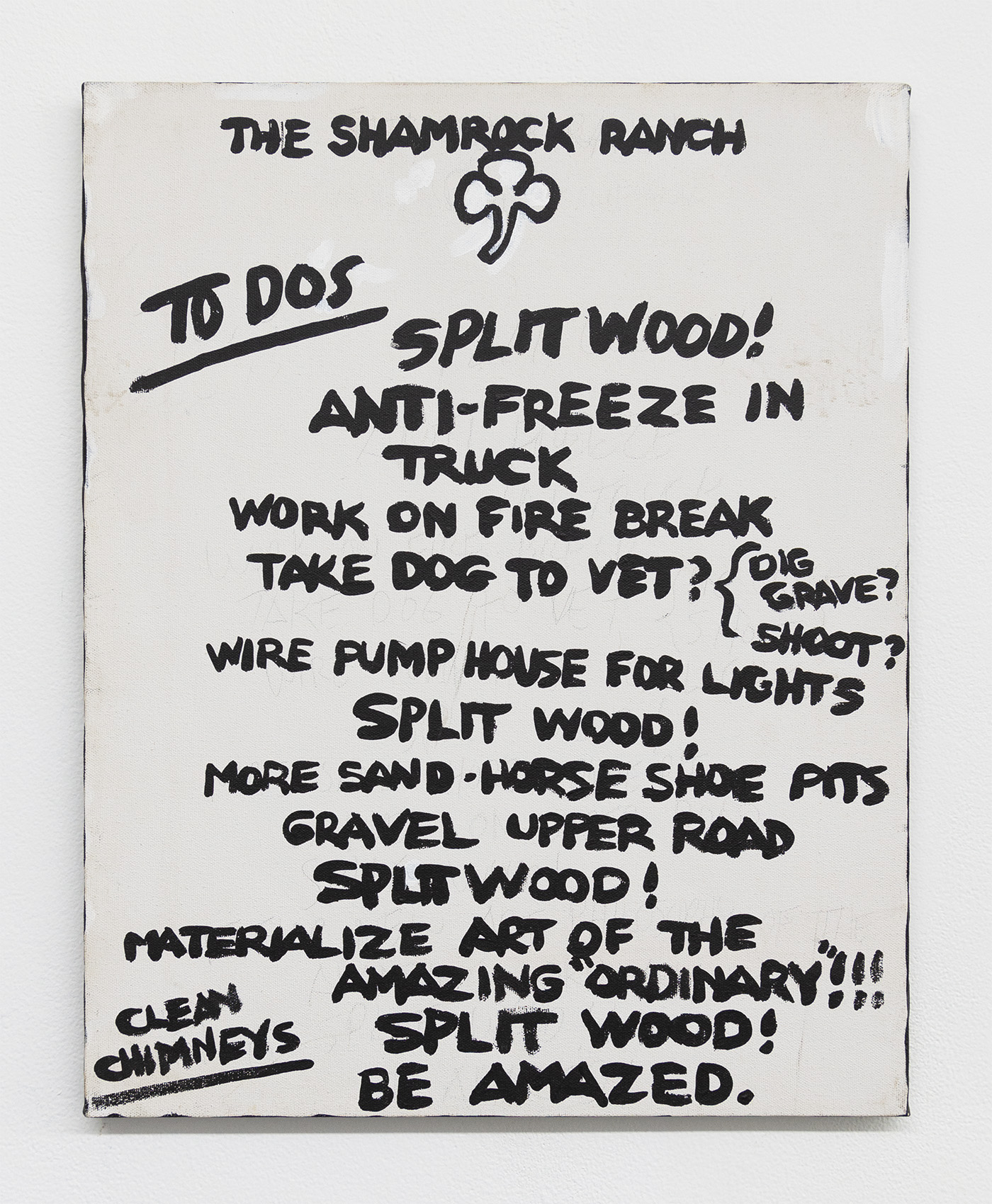
‘The Shamrock Ranch To Dos’, 1993
acrylic on canvas
20 × 16 inches
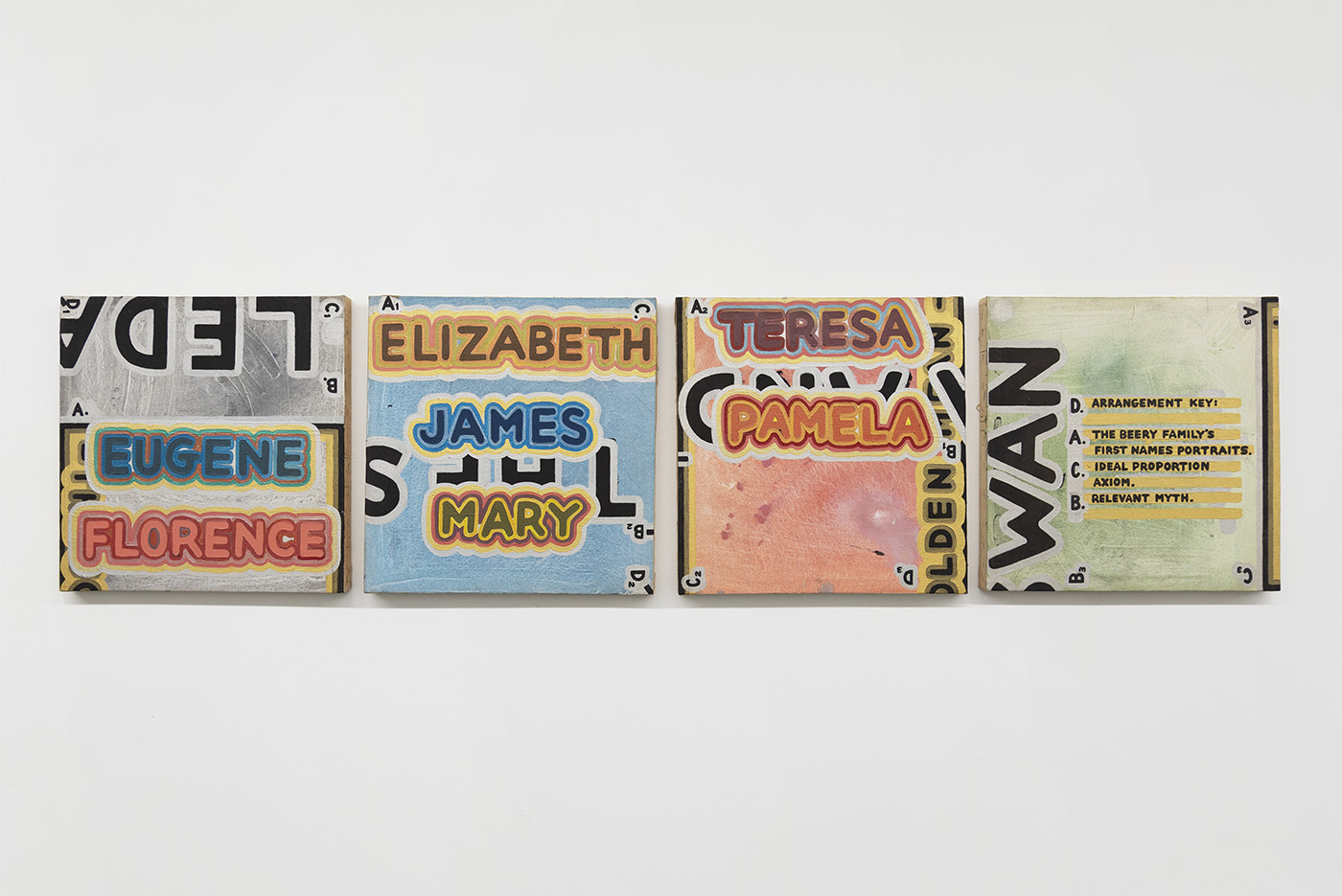
‘Family Portrait’, 1970s
acrylic on canvas
4 panels, each 20 × 20 inches
overall dimensions 20 × 86 inches
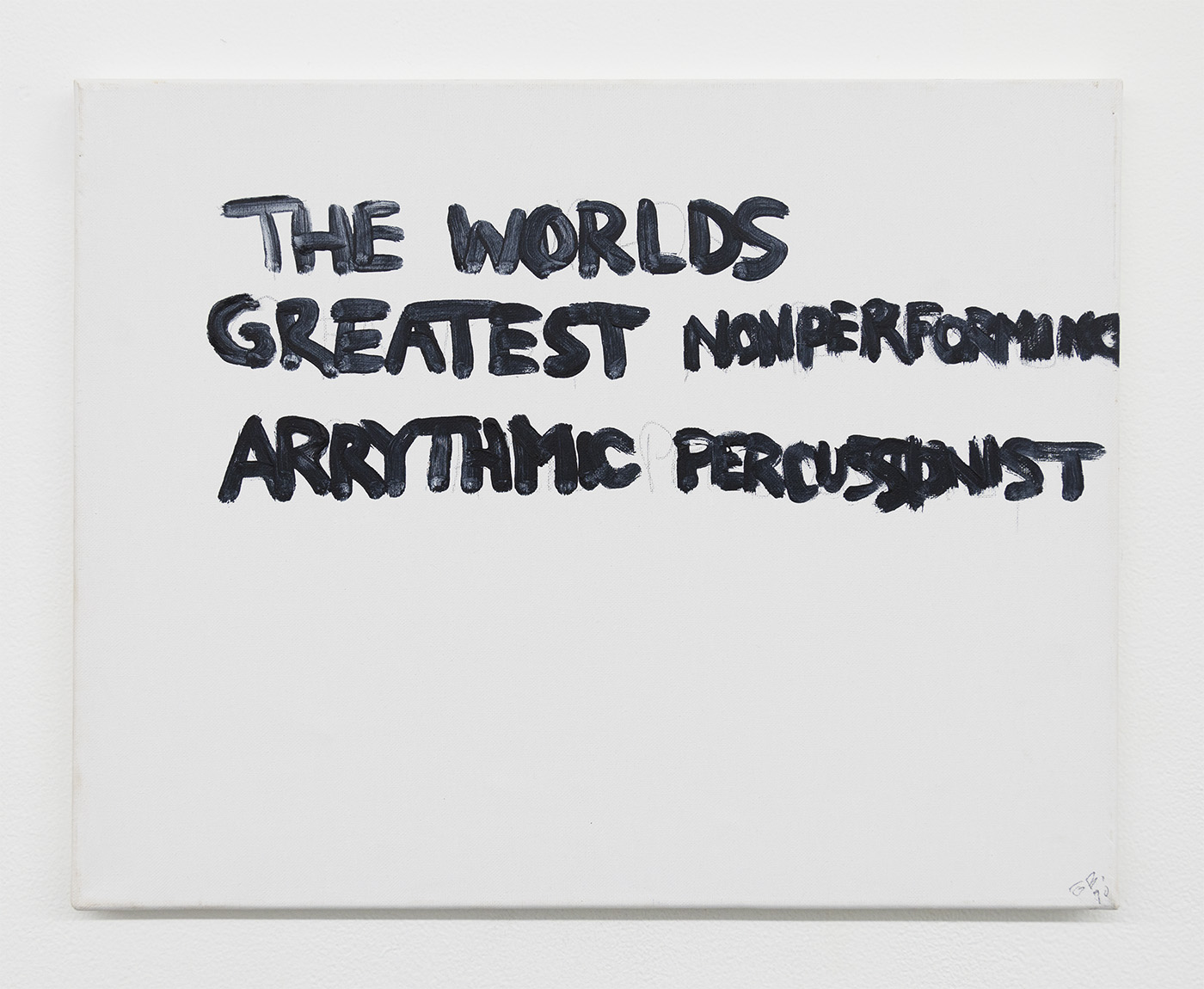
‘The Worlds Greatest Nonperforming Arrythmic Percussionist’, 2000s
acrylic and graphite on canvas
16 × 20 inches
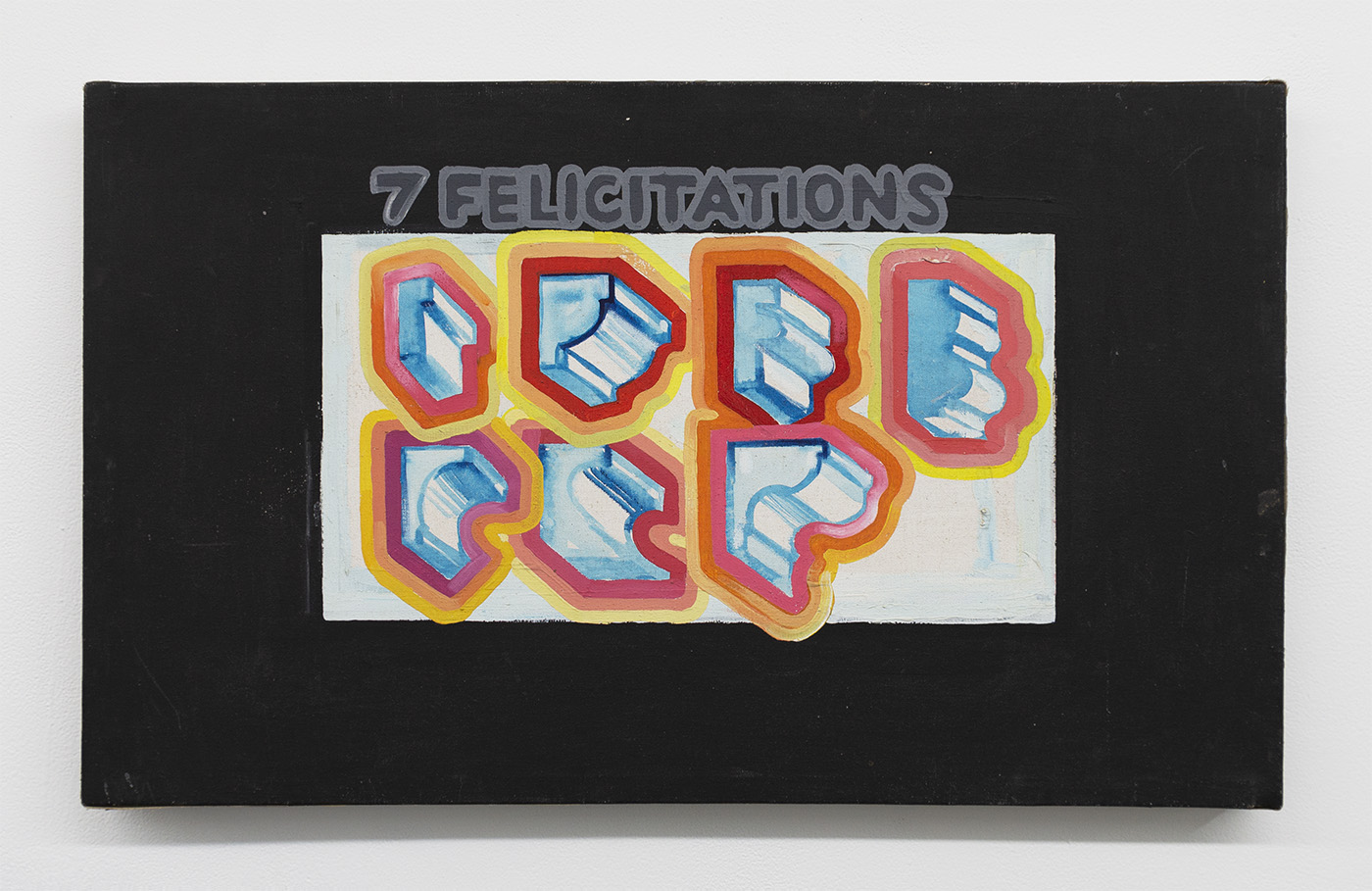
‘7 Felicitations’, 1970s
acrylic on canvas
20 × 26 inches
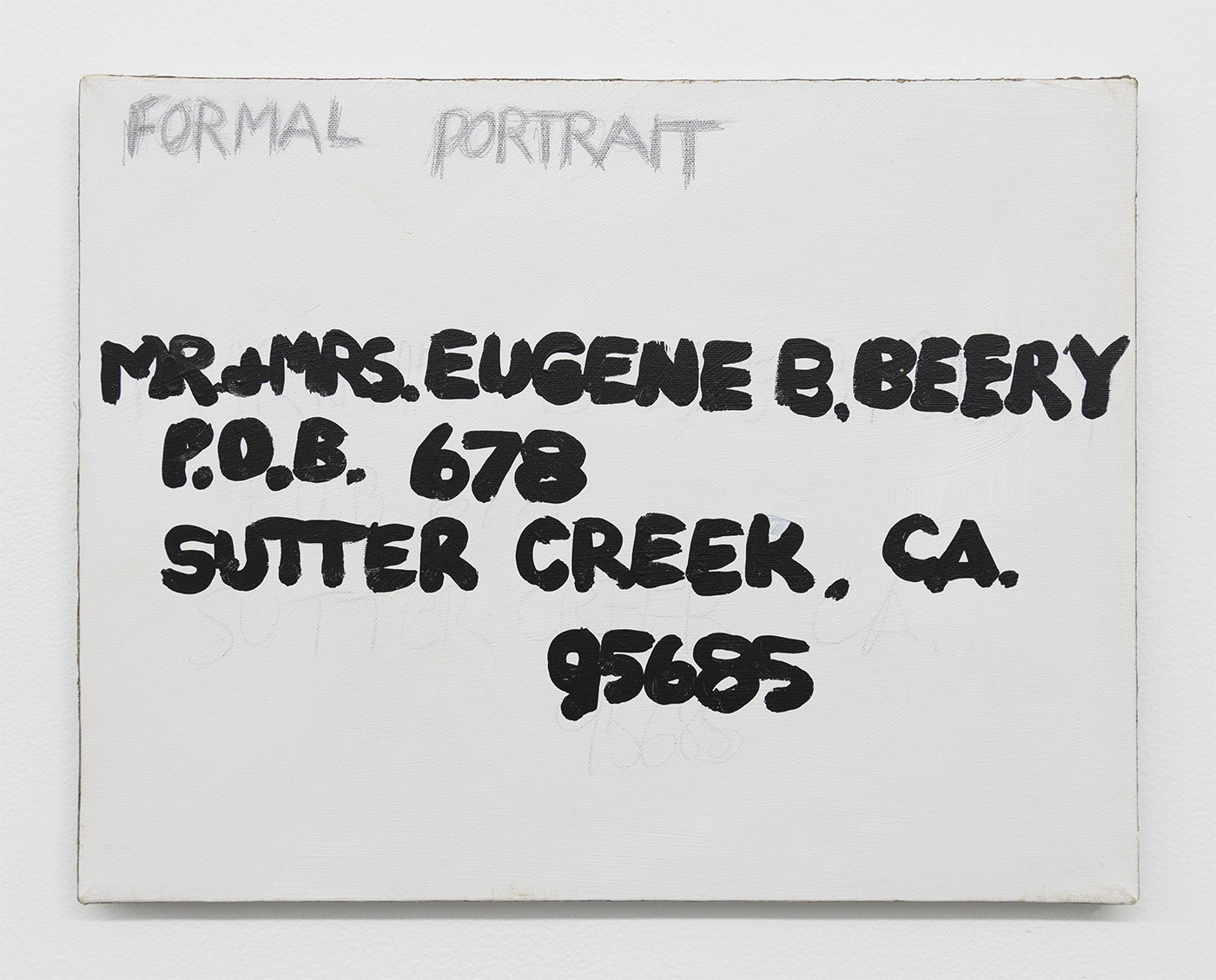
‘Formal Portrait’, 2000s
acrylic and graphite on canvas
12 × 16 inches
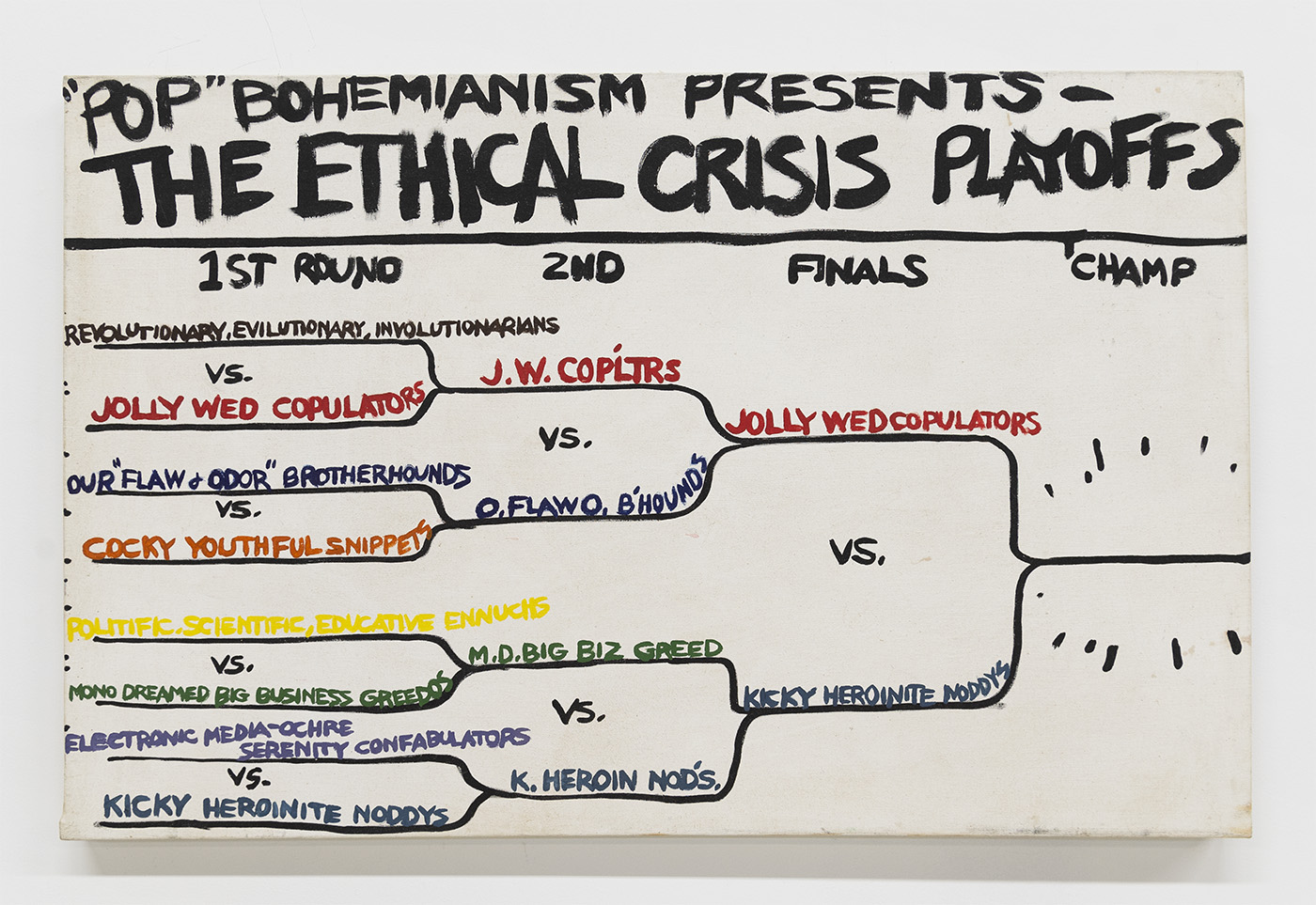
‘The Ethical Crisis Playoffs’, 1970s
acrylic on canvas
27 × 42 inches
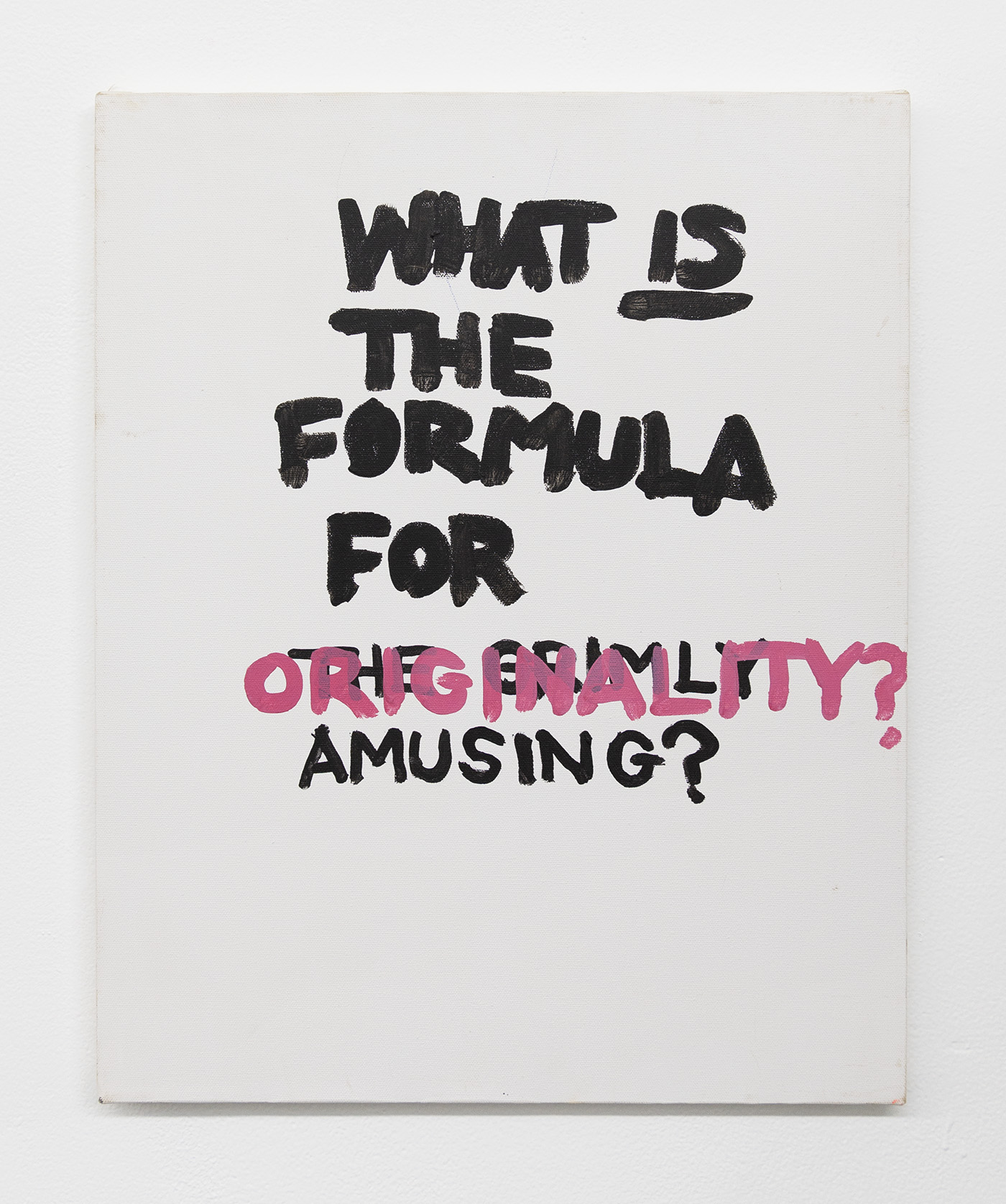
‘What Is the Formula?’, 2000s
acrylic on canvas
20 × 16 inches
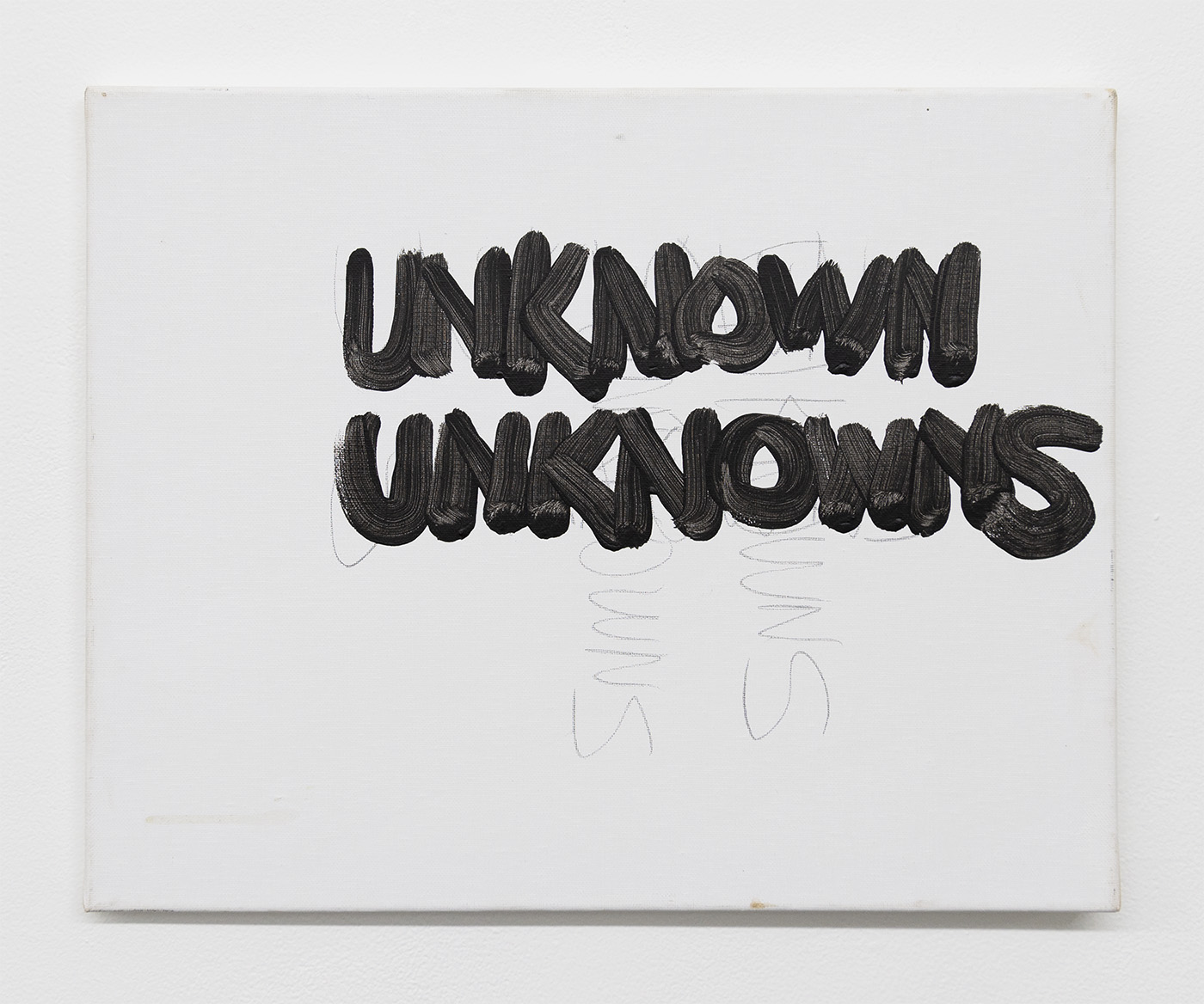
‘Unknown Unknowns’, 2010
acrylic and graphite on canvas
16 × 20 inches
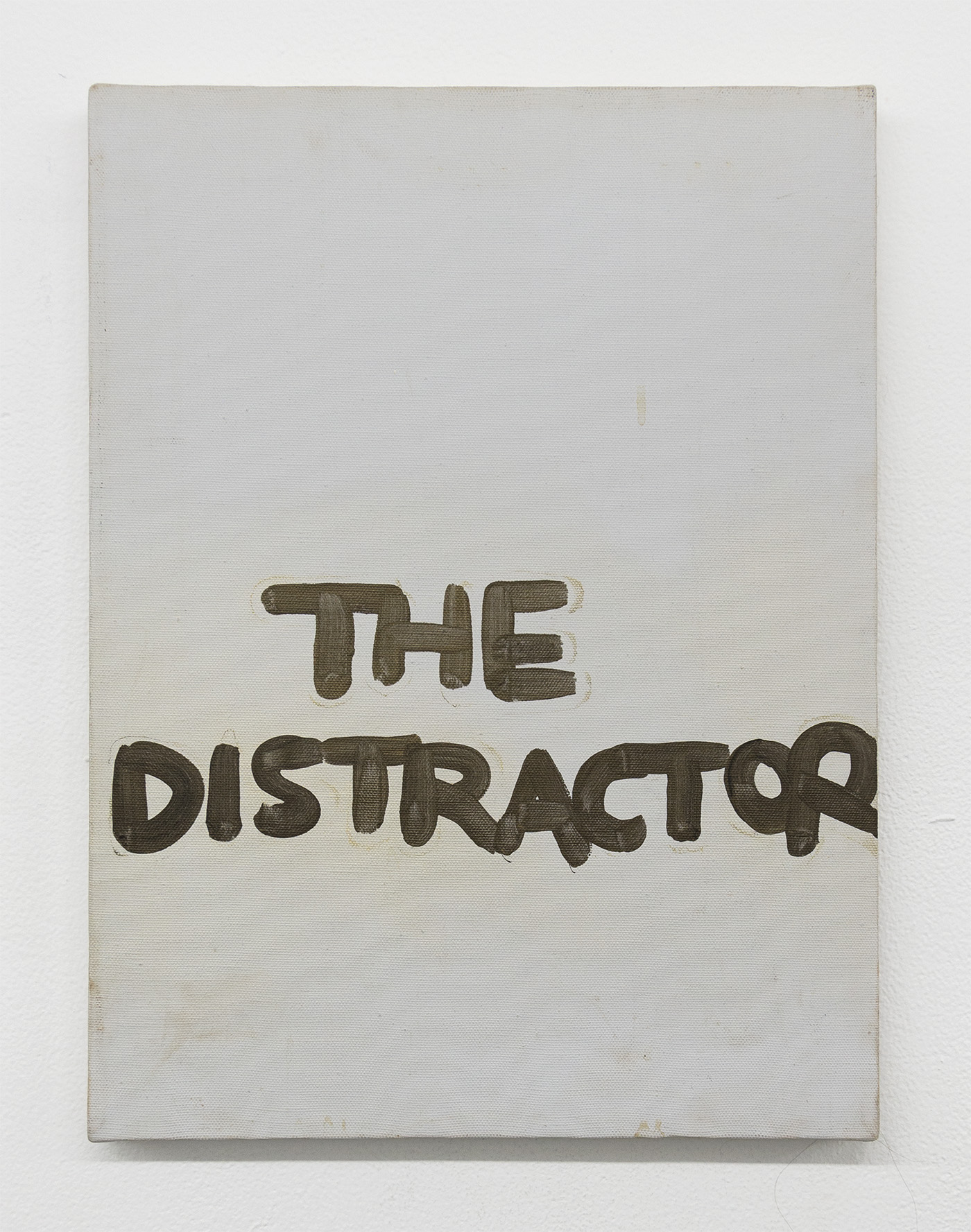
‘The Distractor’, 2000s
acrylic on canvas
16 × 12 inches
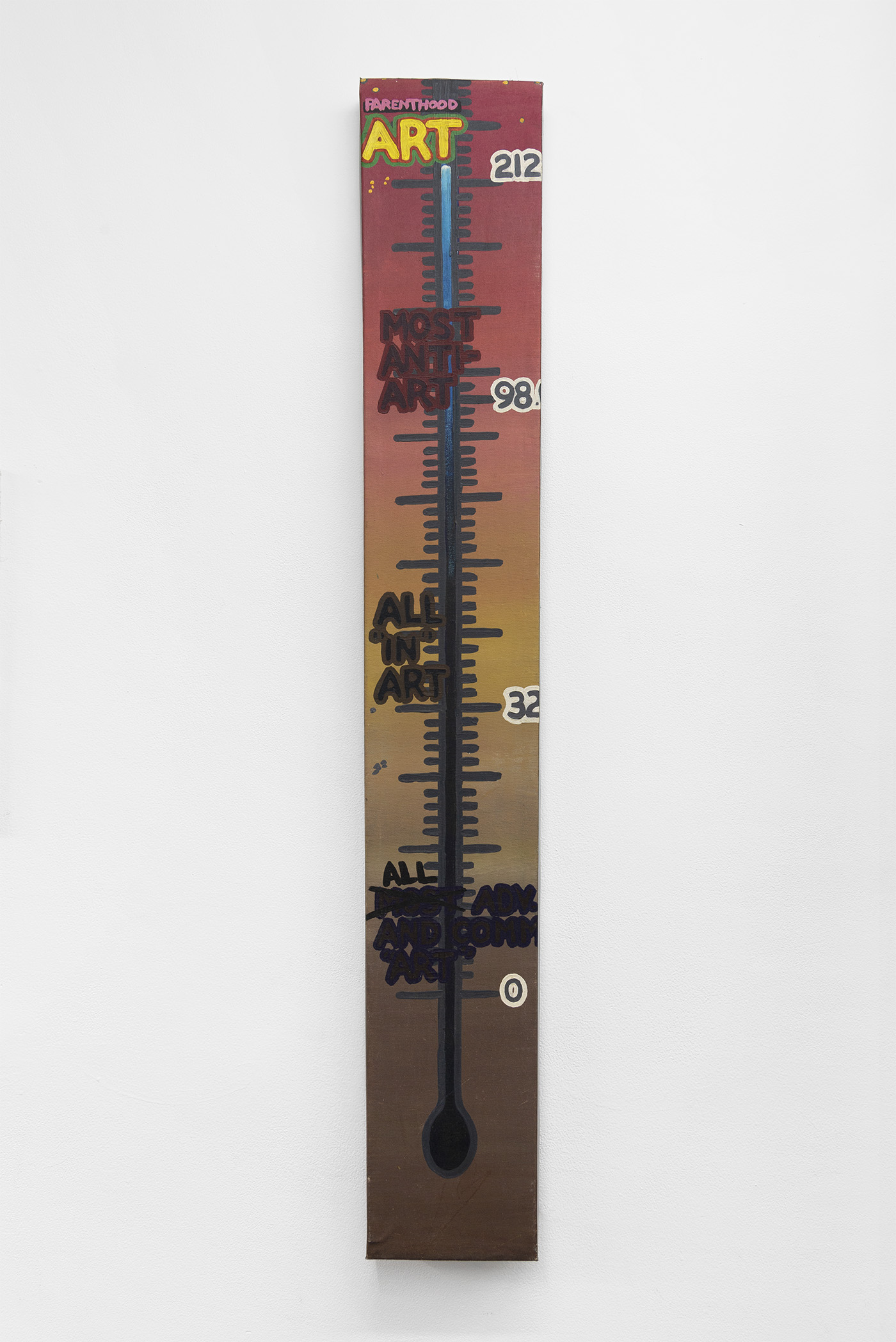
‘Parenthood Art’, 1970s
acrylic on canvas
50 × 8 inches
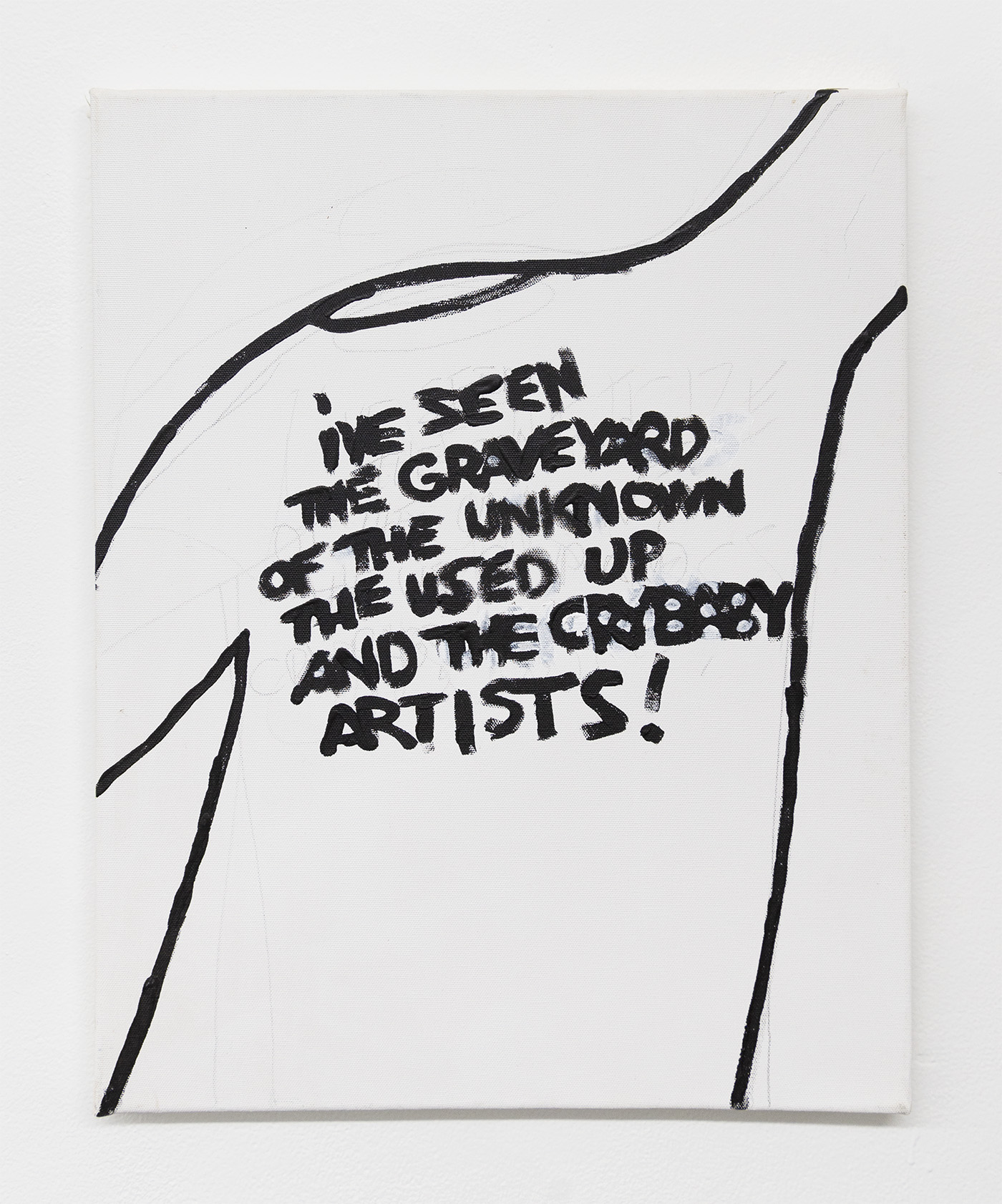
‘I’ve Seen the Graveyard’, 2000
acrylic and graphite on canvas
20 × 16 inches
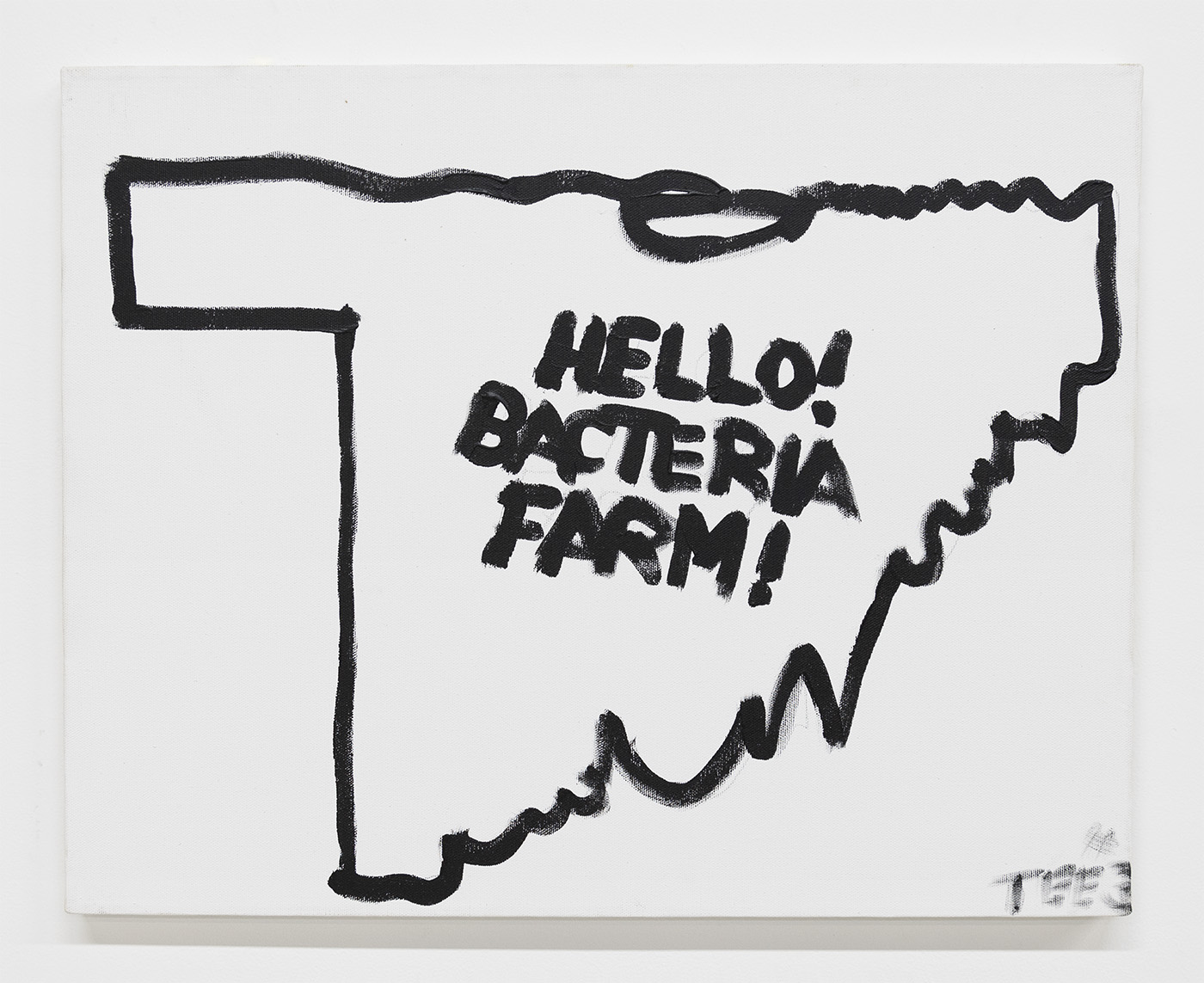
‘Hello! Bacteria Farm!’, 2000s
acrylic and graphite on canvas
16 × 20 inches
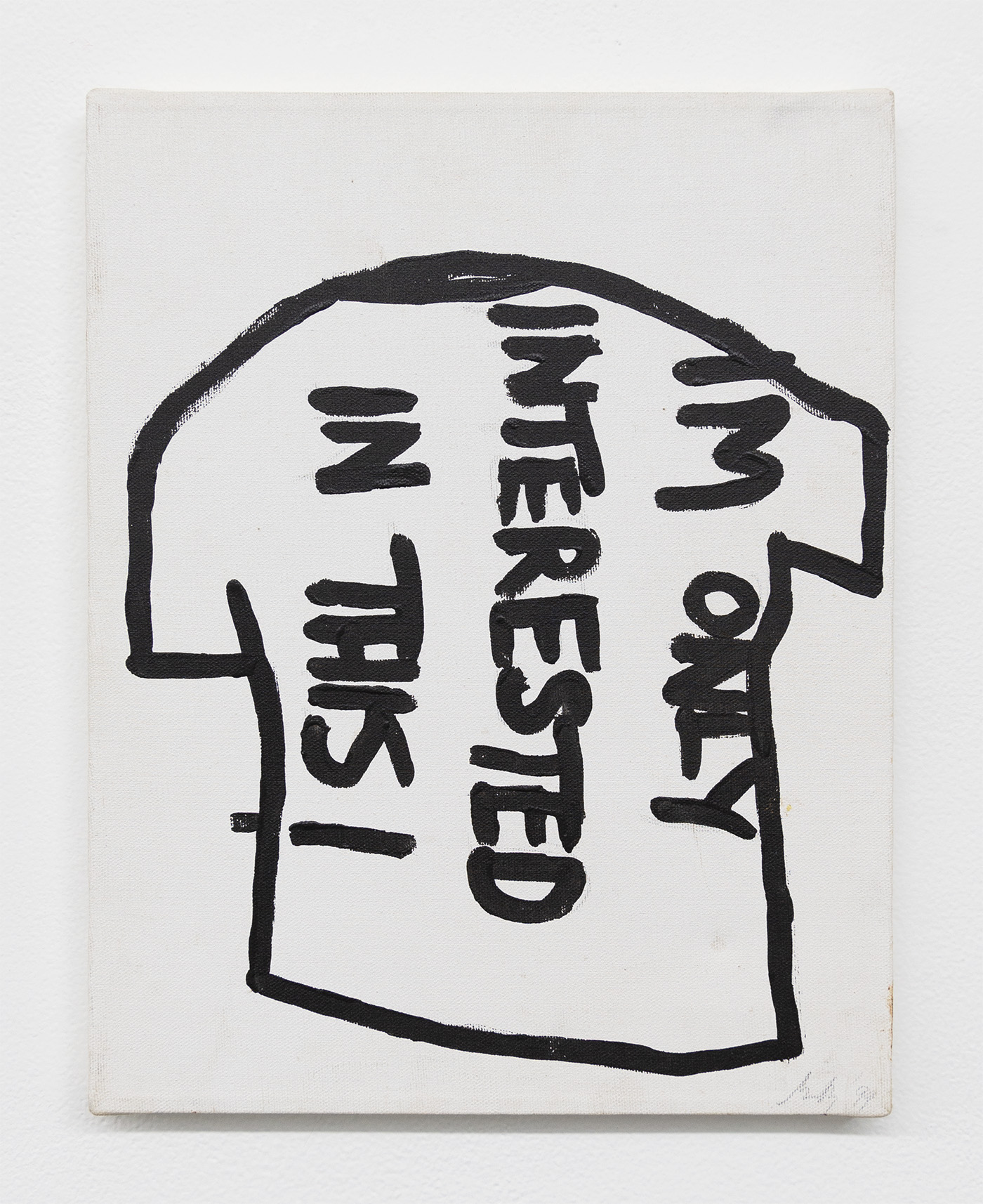
‘I’m Only Interested in This!’, 1999
acrylic and graphite on canvas
14 × 11 inches
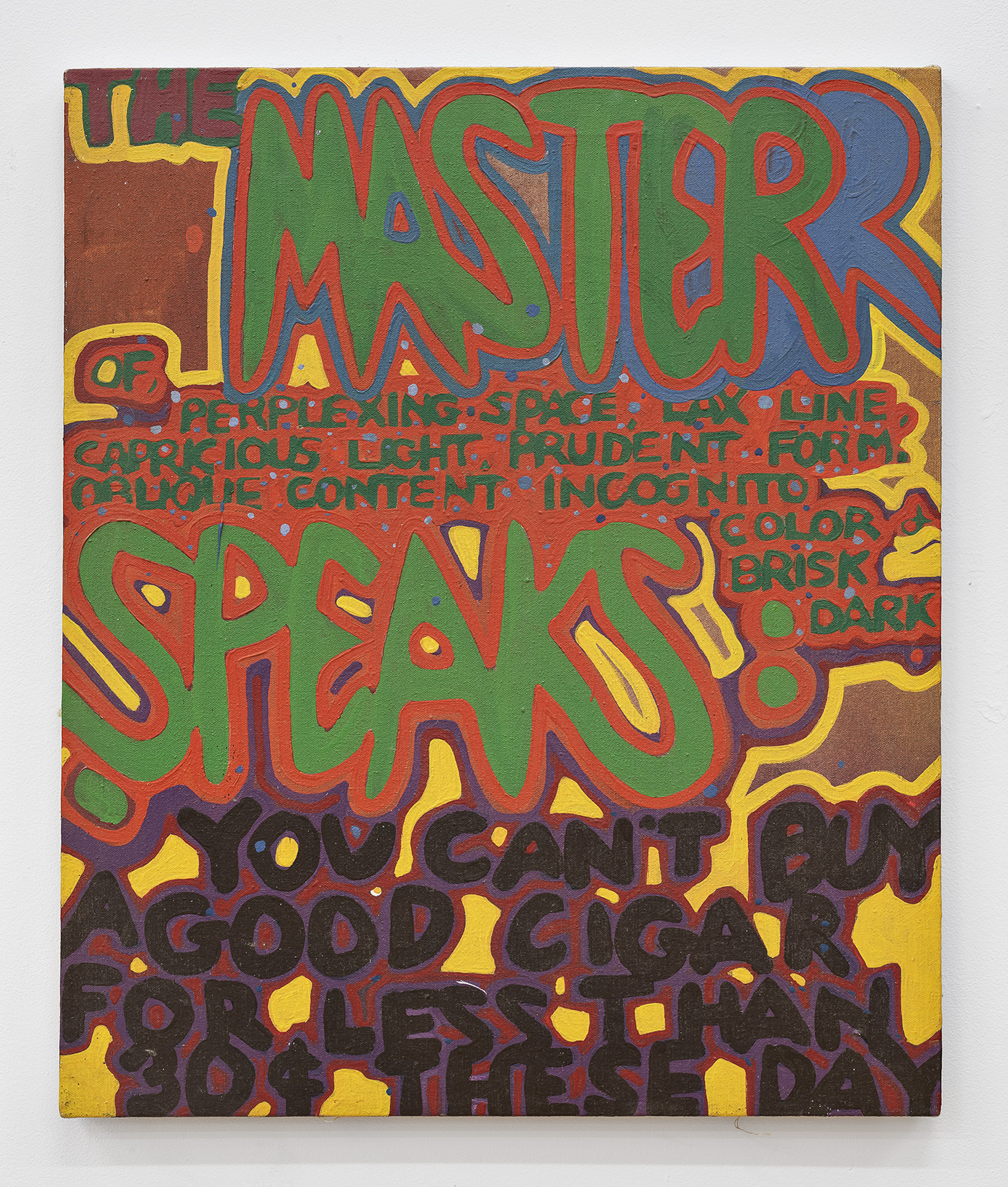
‘The Master Speaks’, 1970s
acrylic on canvas
26 ¼ × 22 inches
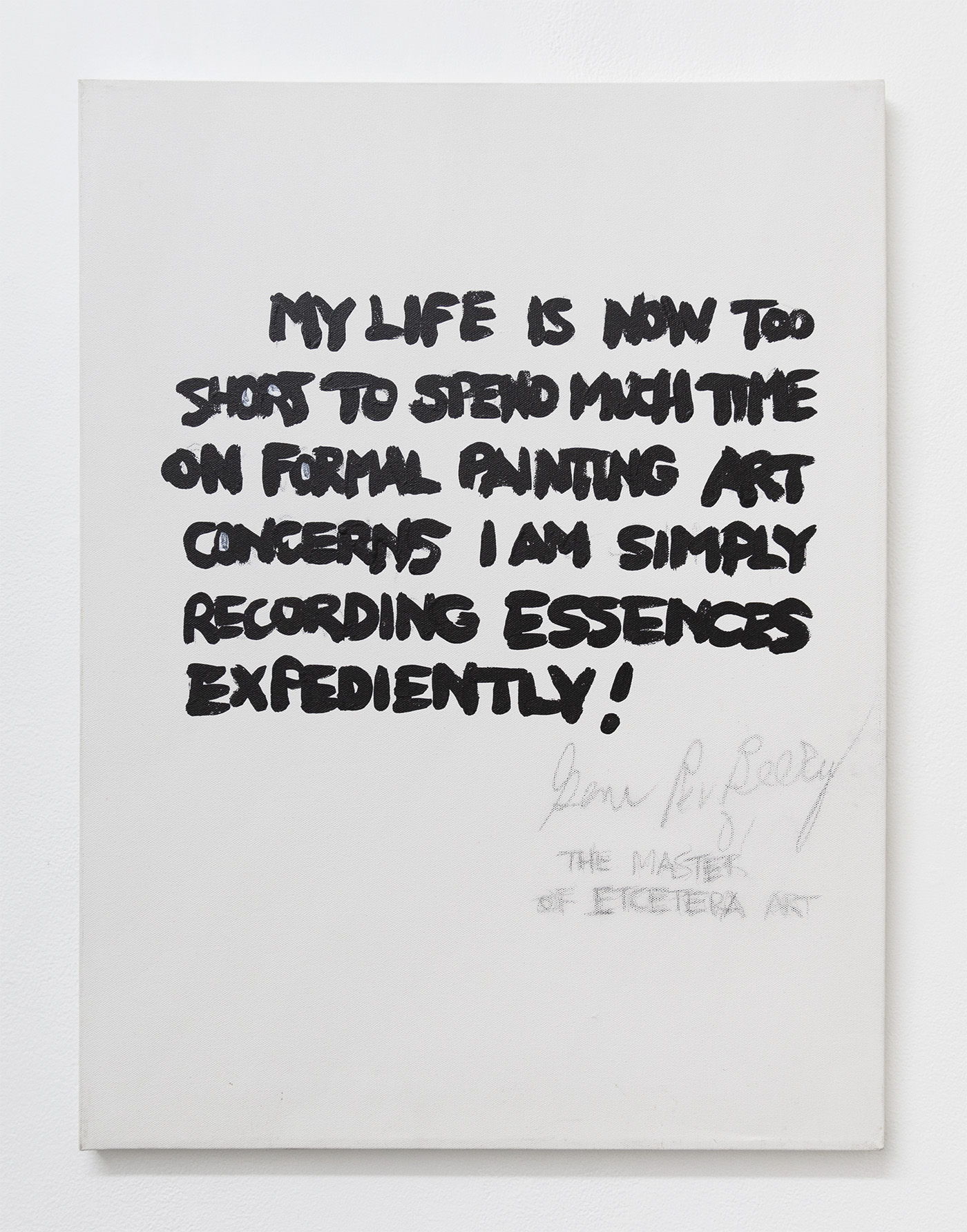
‘My Life Is Now Too Short to Spend Much Time on Formal Painting Art Concerns’, 2000s
acrylic and graphite on canvas
24 × 18 inches
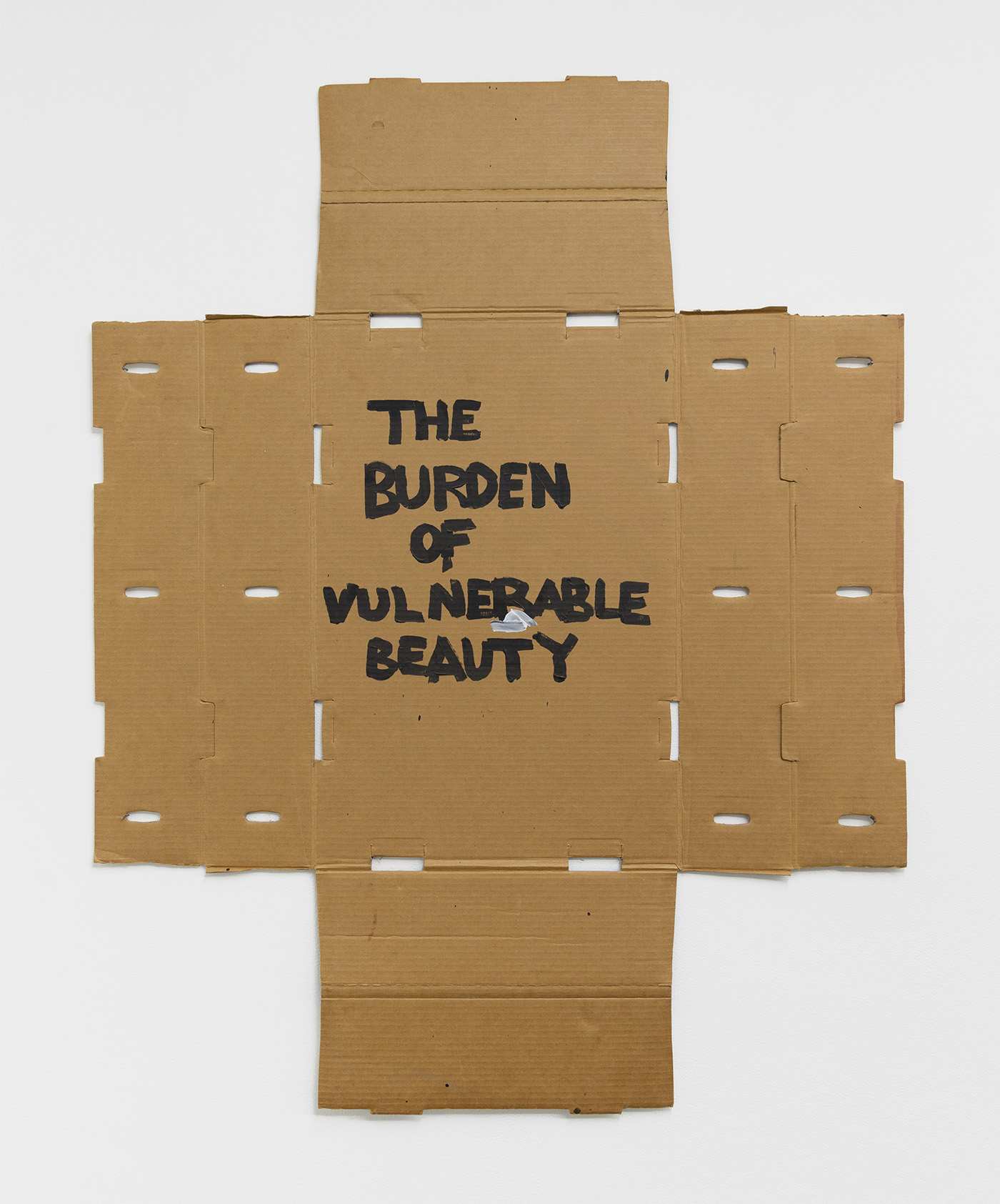
‘The Burden of Vulnerable Beauty’, 2000s
acrylic on cardboard
44 × 36 ½ inches
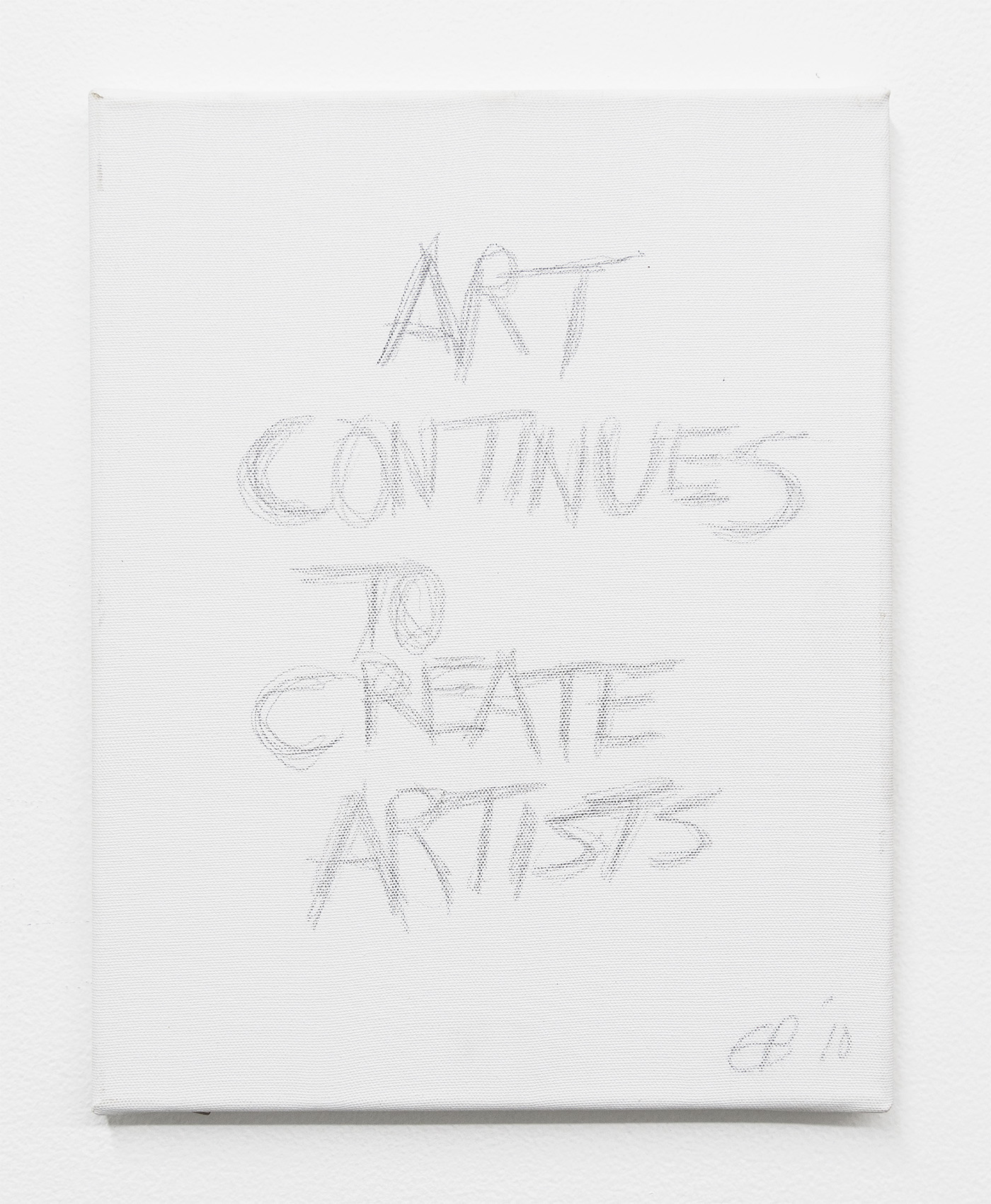
‘Art Continues to Create Artists’, 2010
graphite on canvas
14 × 11 inches
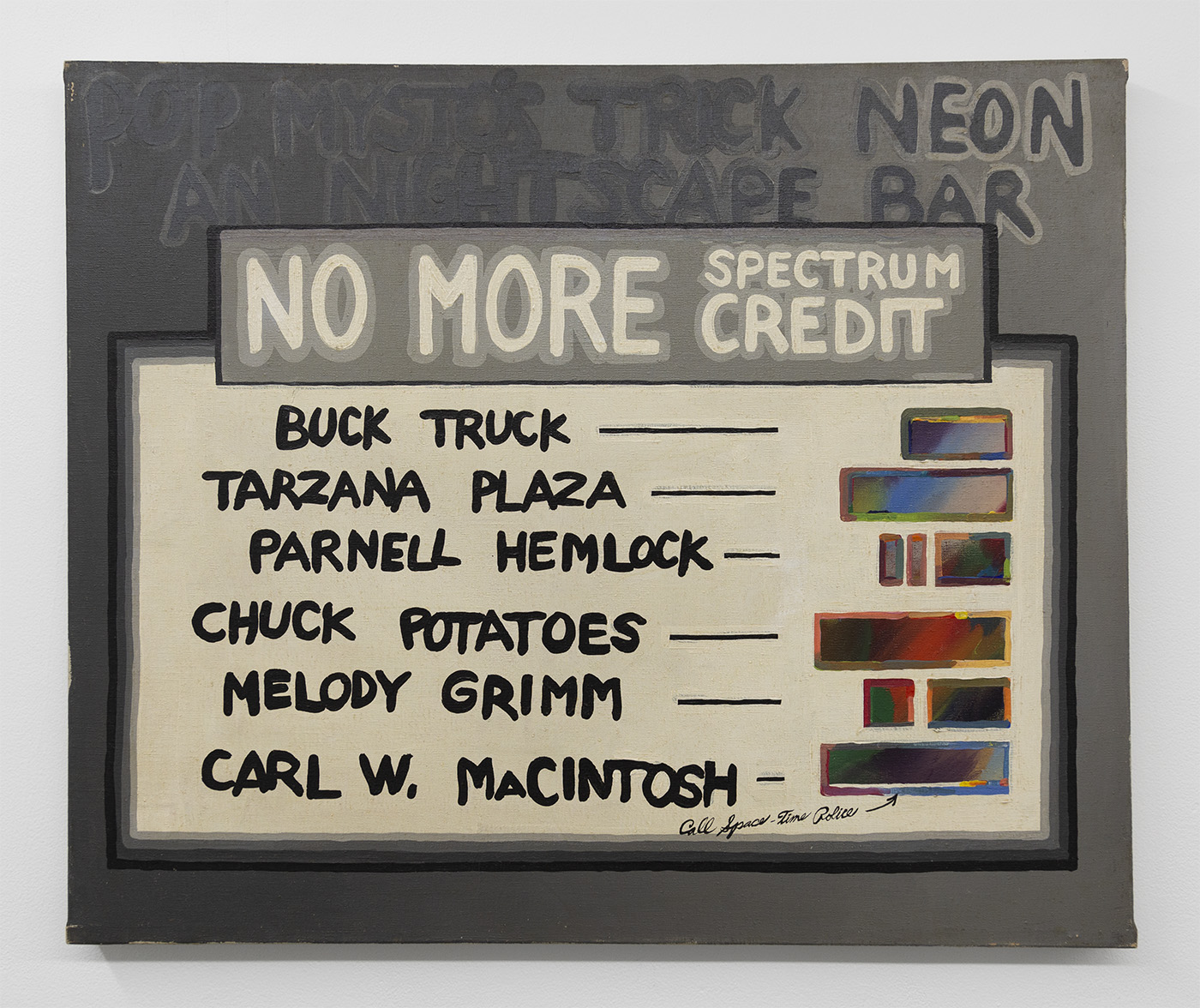
‘No More Spectrum Credit’, 1970s
acrylic on canvas
30 × 36 inches
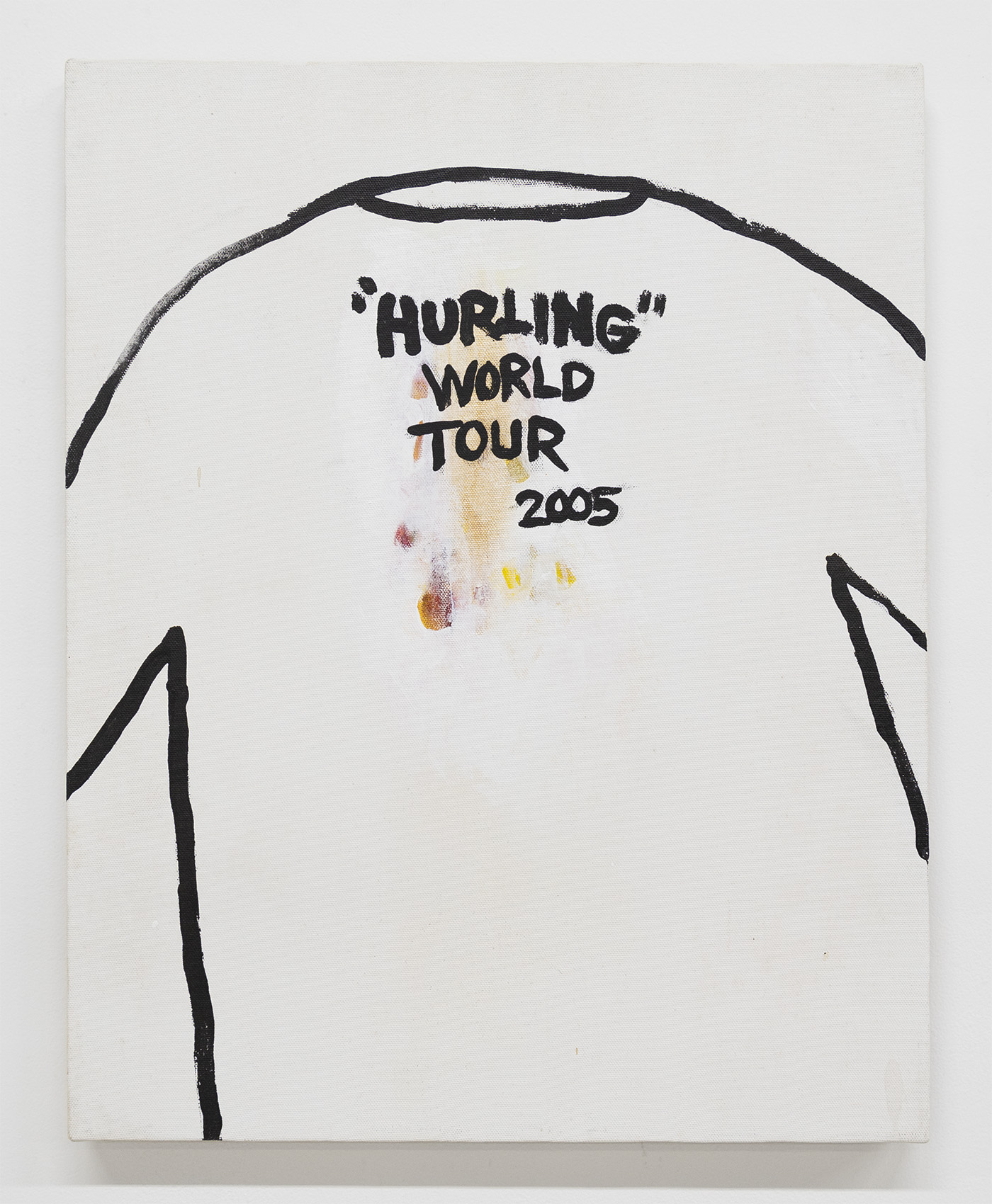
‘Hurling World Tour’, 2005
acrylic on canvas
20 × 16 inches
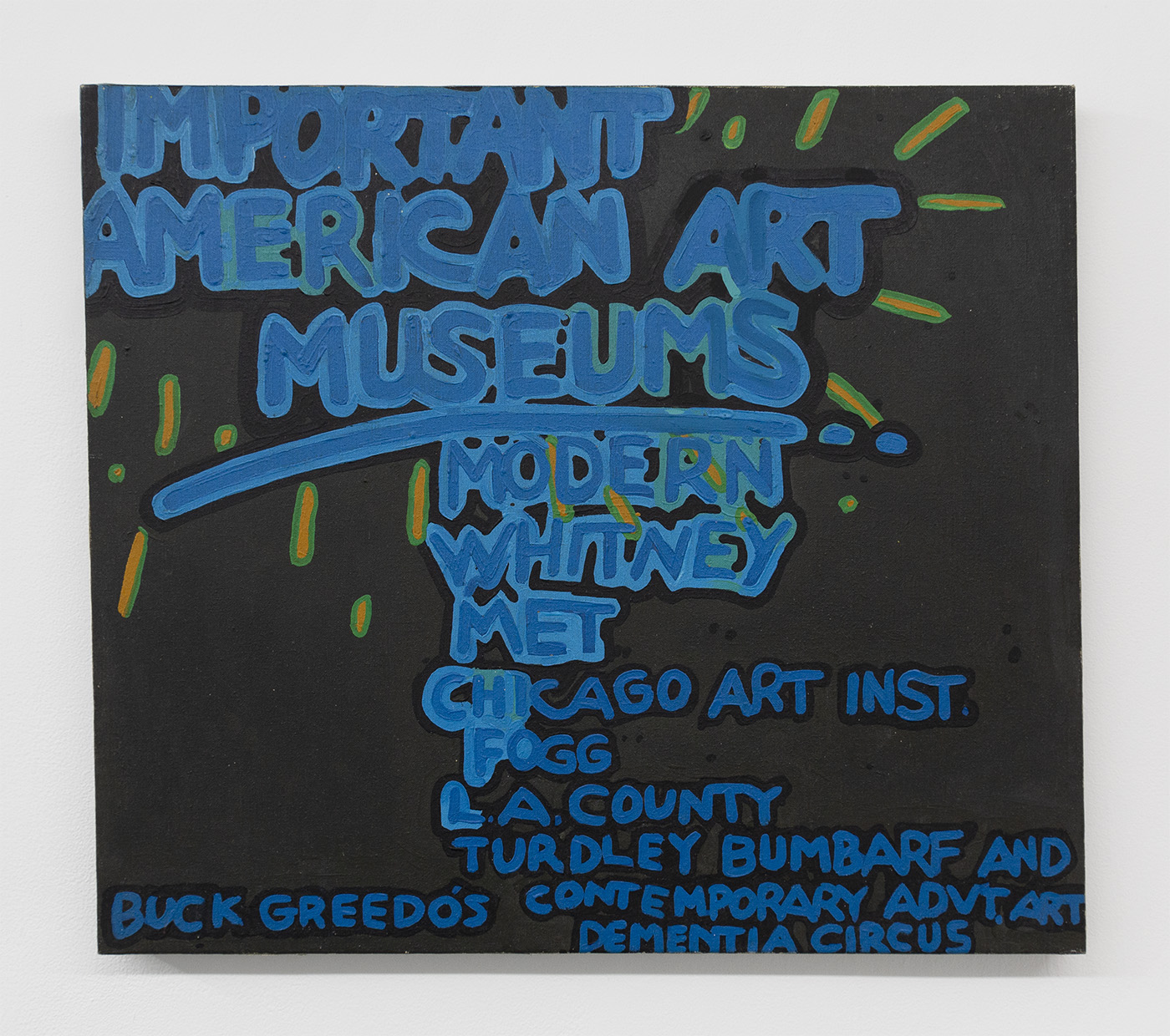
‘Important American Art Museums’, 1970s
acrylic on canvas
24 × 27 ½ inches

‘A Nice Painting’, 1994
acrylic on canvas
20 × 16 inches
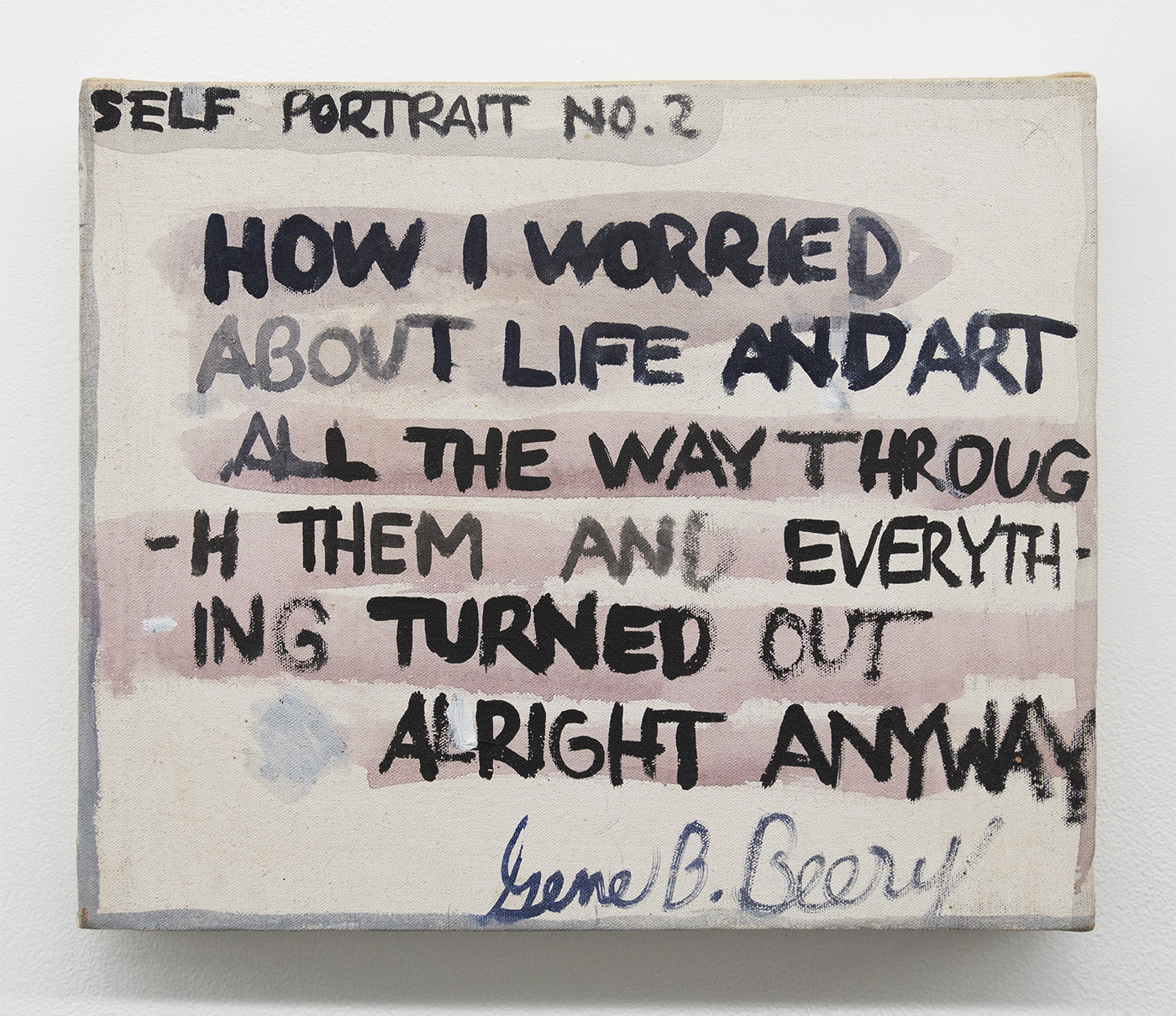
‘How I Worried About Life and Art All the Way Through Them and Everything Turned out All Right Anyway’, 1990s
acrylic on canvas
13 ½ × 16 inches
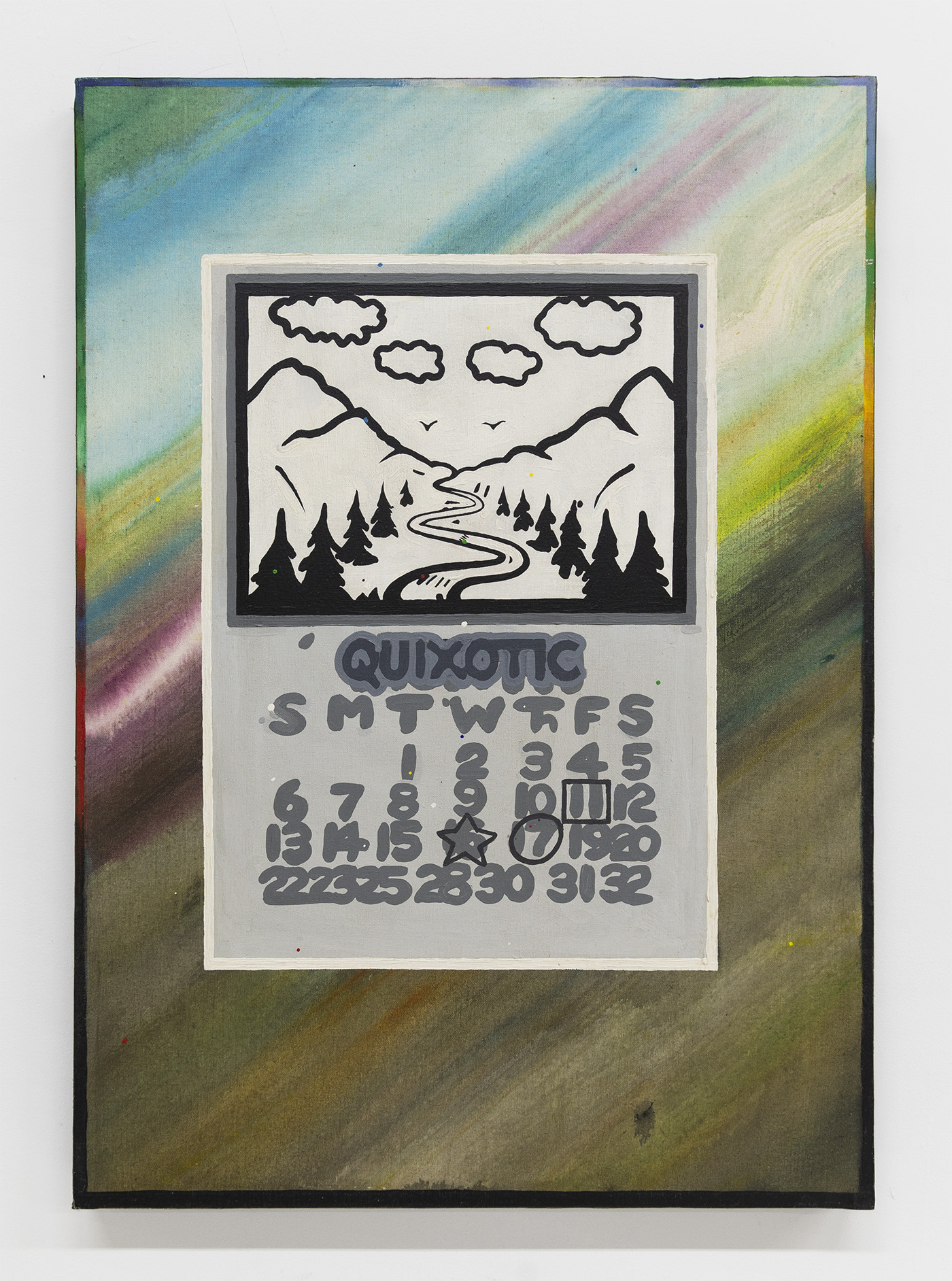
‘Quixotic’, 1975
acrylic on canvas
36 × 25 ½ inches
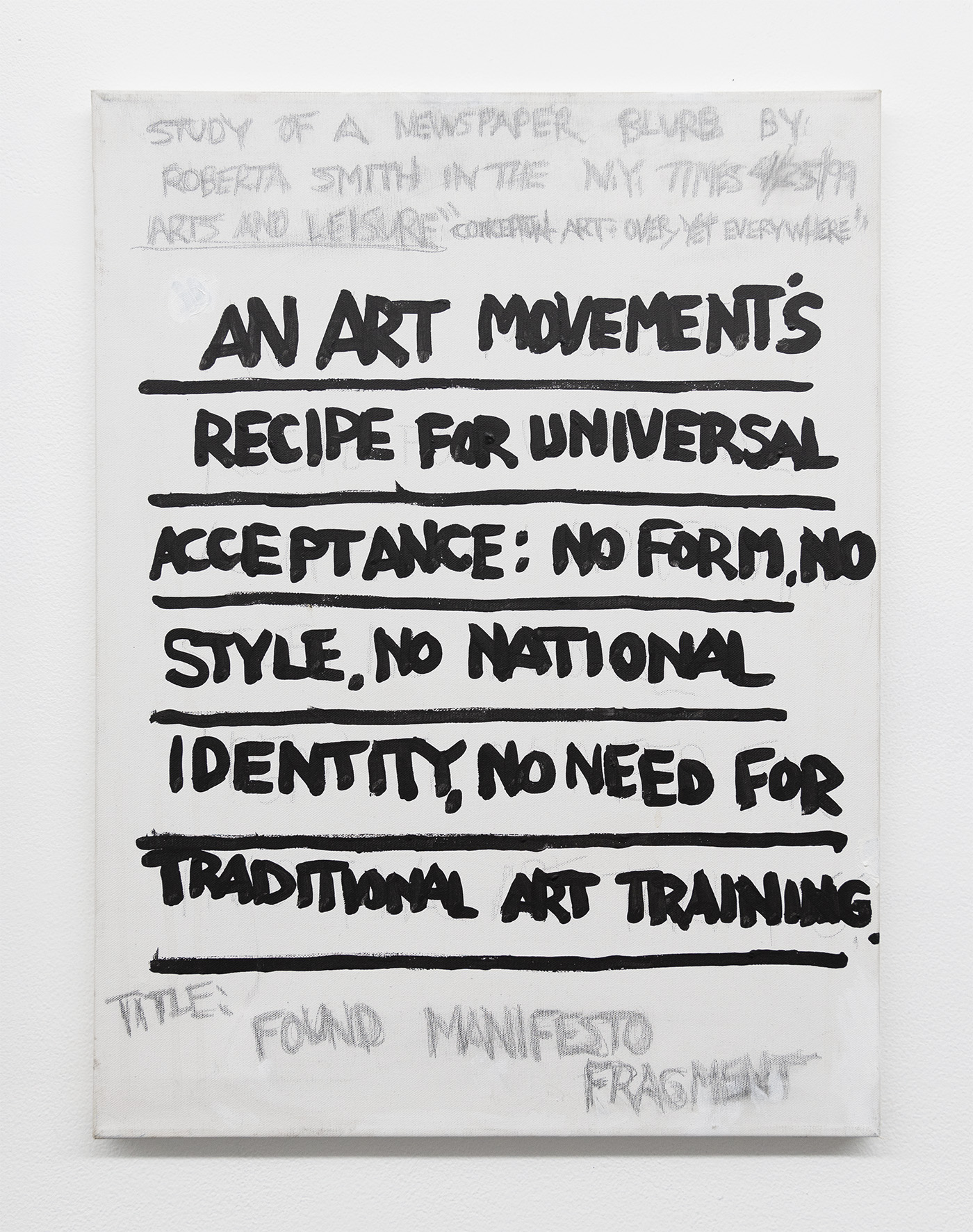
‘An Art Movement’s Recipe for Universal Acceptance’, 1999
acrylic and graphite on canvas
24 × 18 inches
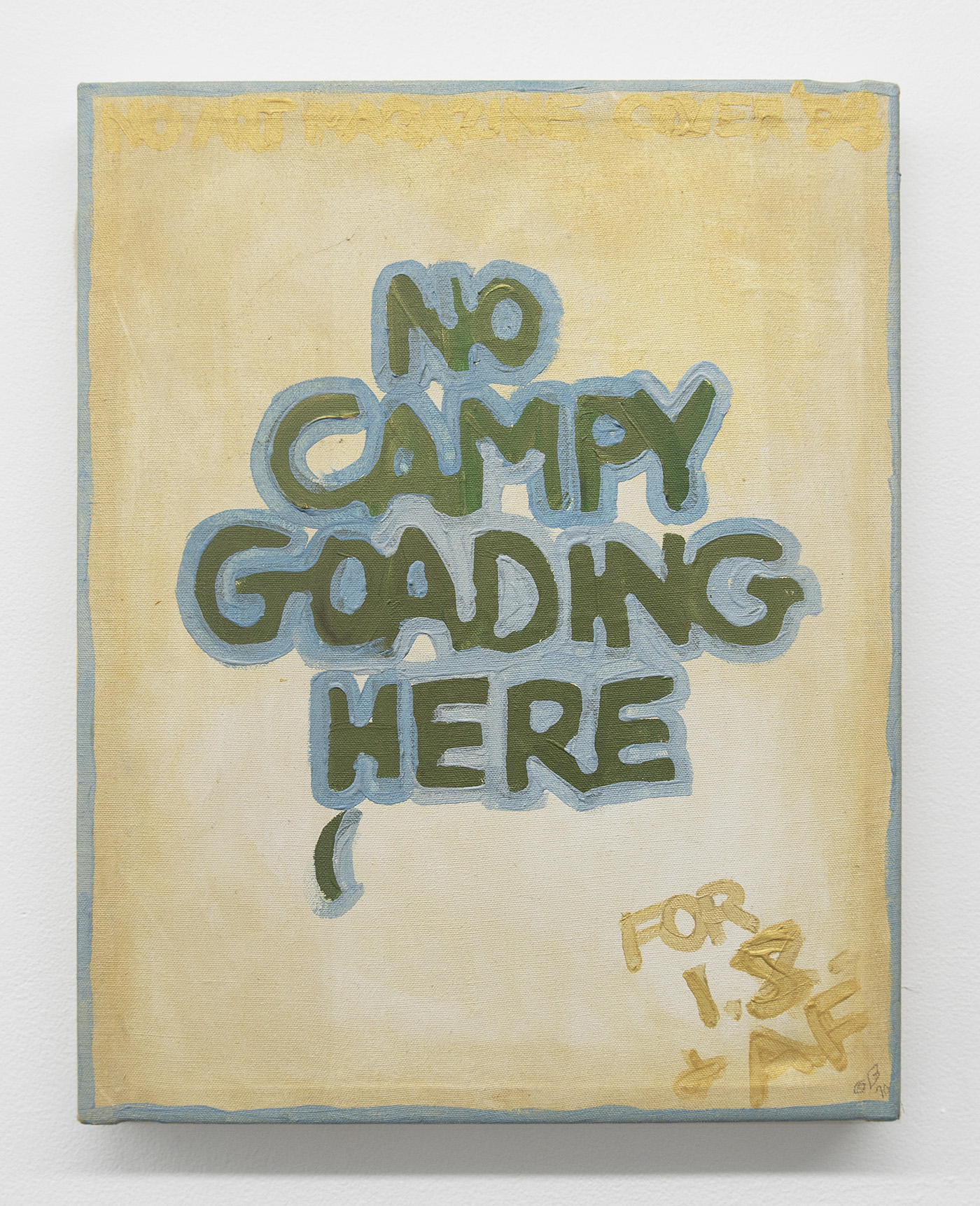
‘No Campy Goading Here’, 1990
acrylic on canvas
18 × 14 ¼ inches
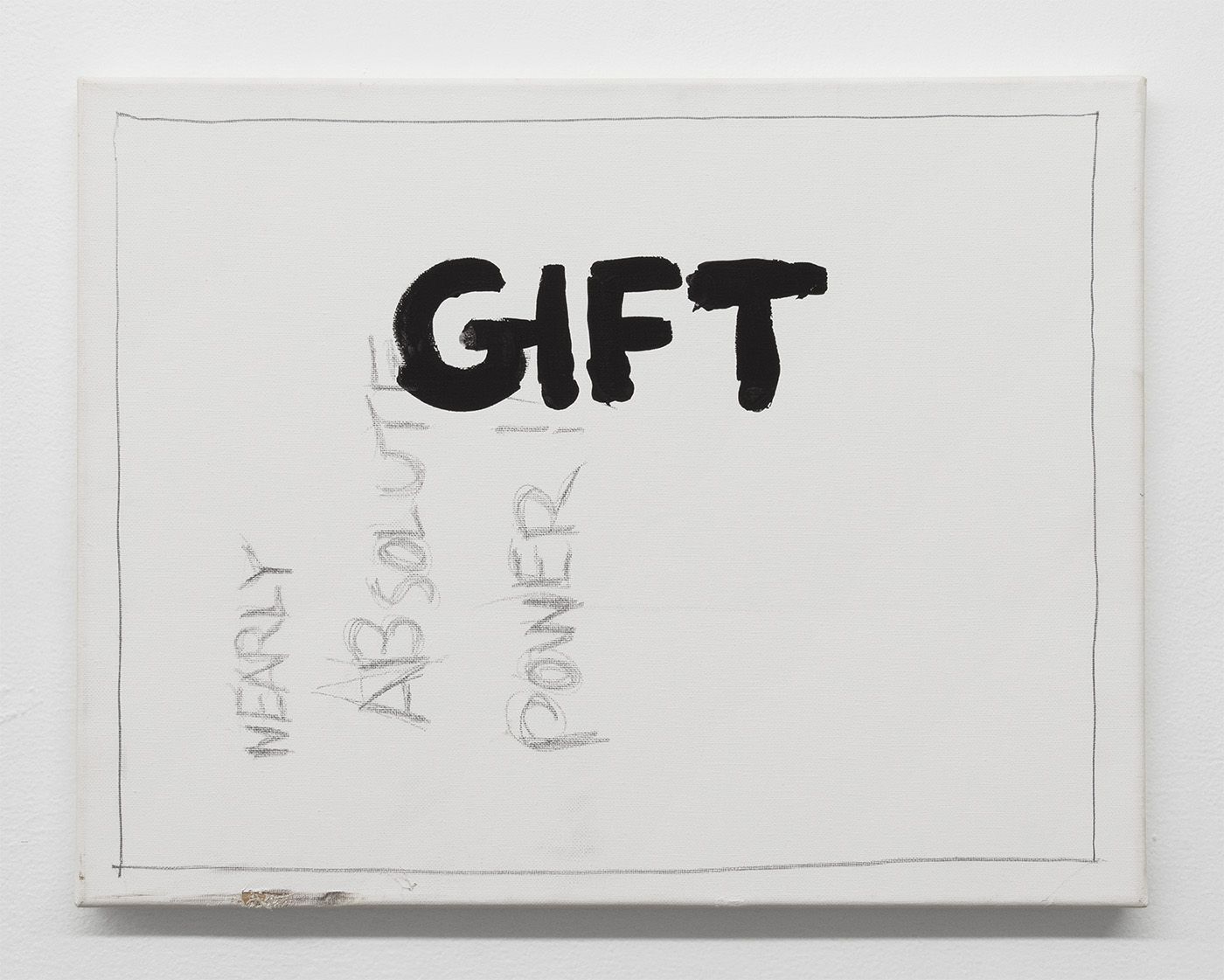
‘Gift’, 2012
acrylic and graphite on canvas
14 × 18 inches
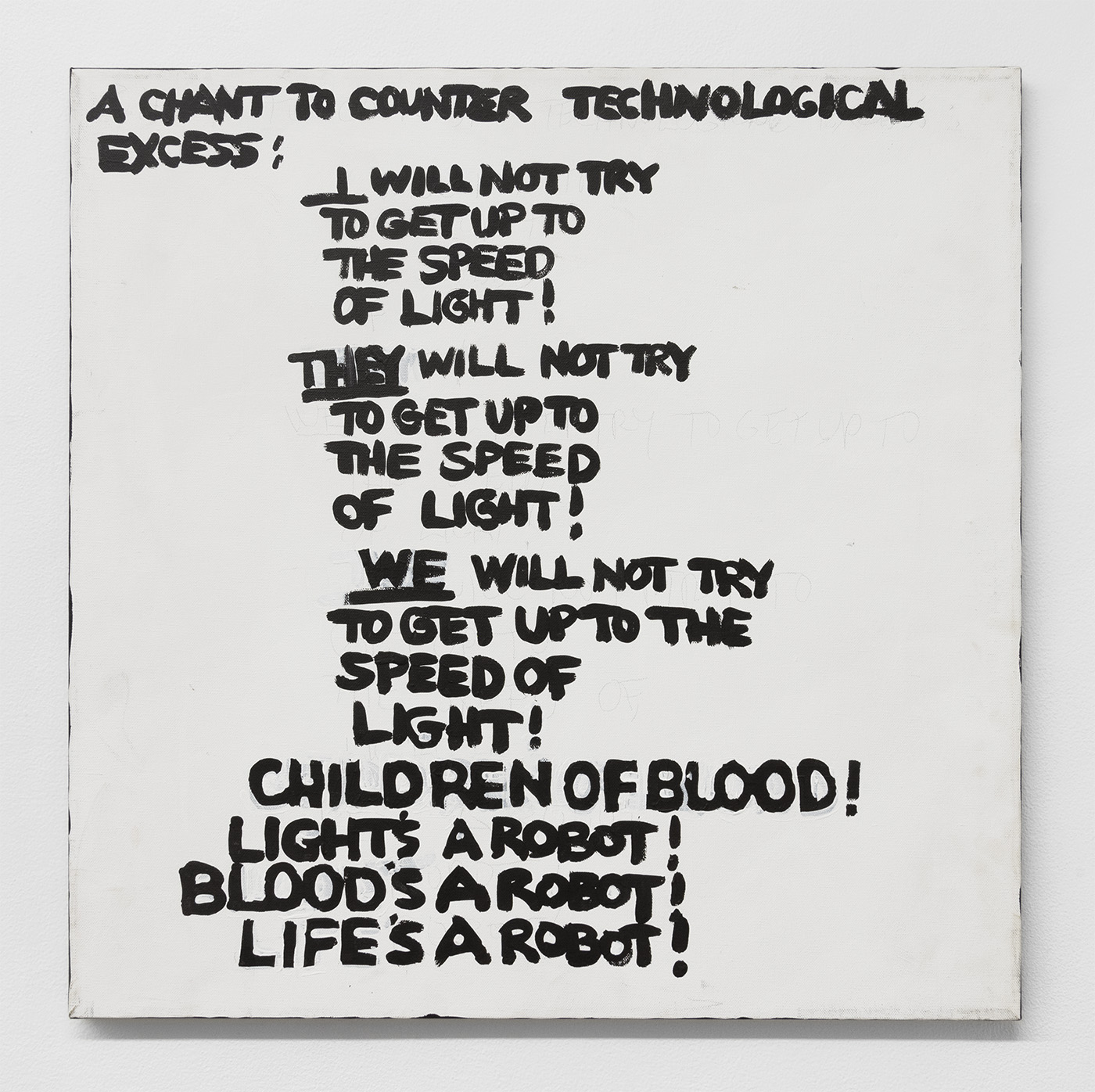
‘A Chant to Counter Technological Excess’, 1990s
acrylic and graphite on canvas
25 × 22 inches
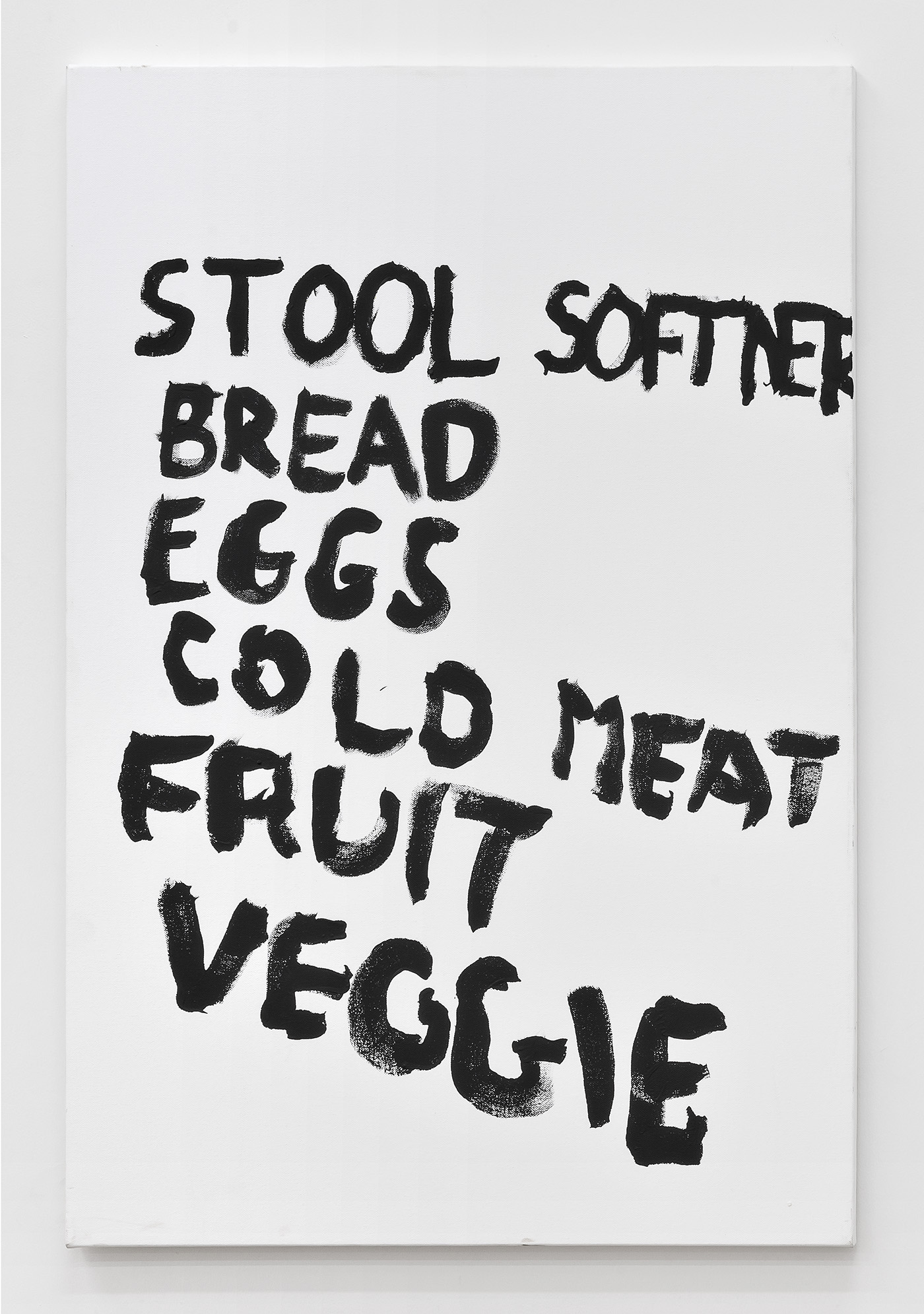
‘Shopping List’, 2018
acrylic on canvas
36 × 24 inches
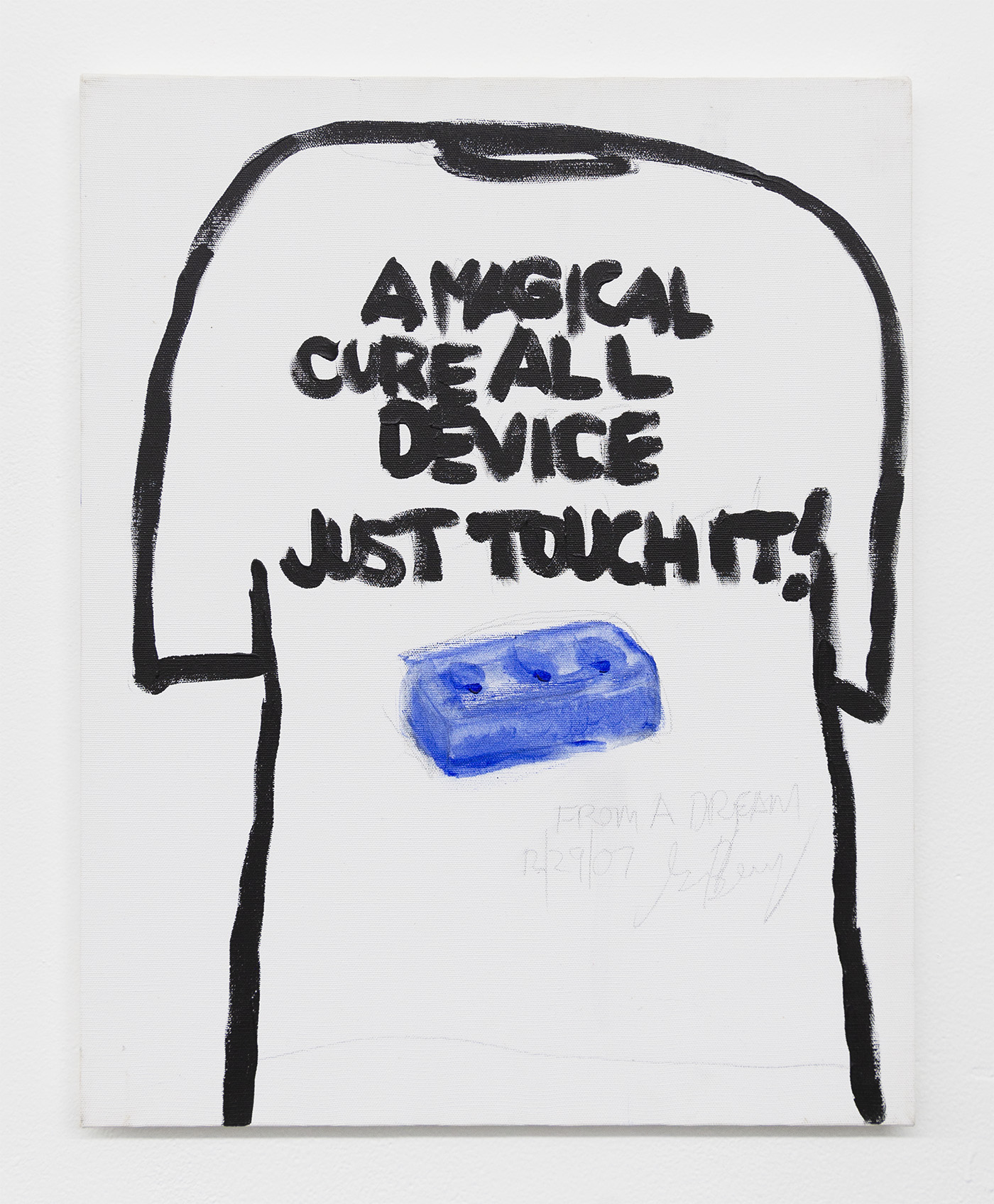
‘A Magical Cure All Device’, 2007
acrylic and graphite on canvas
20 × 16 inches
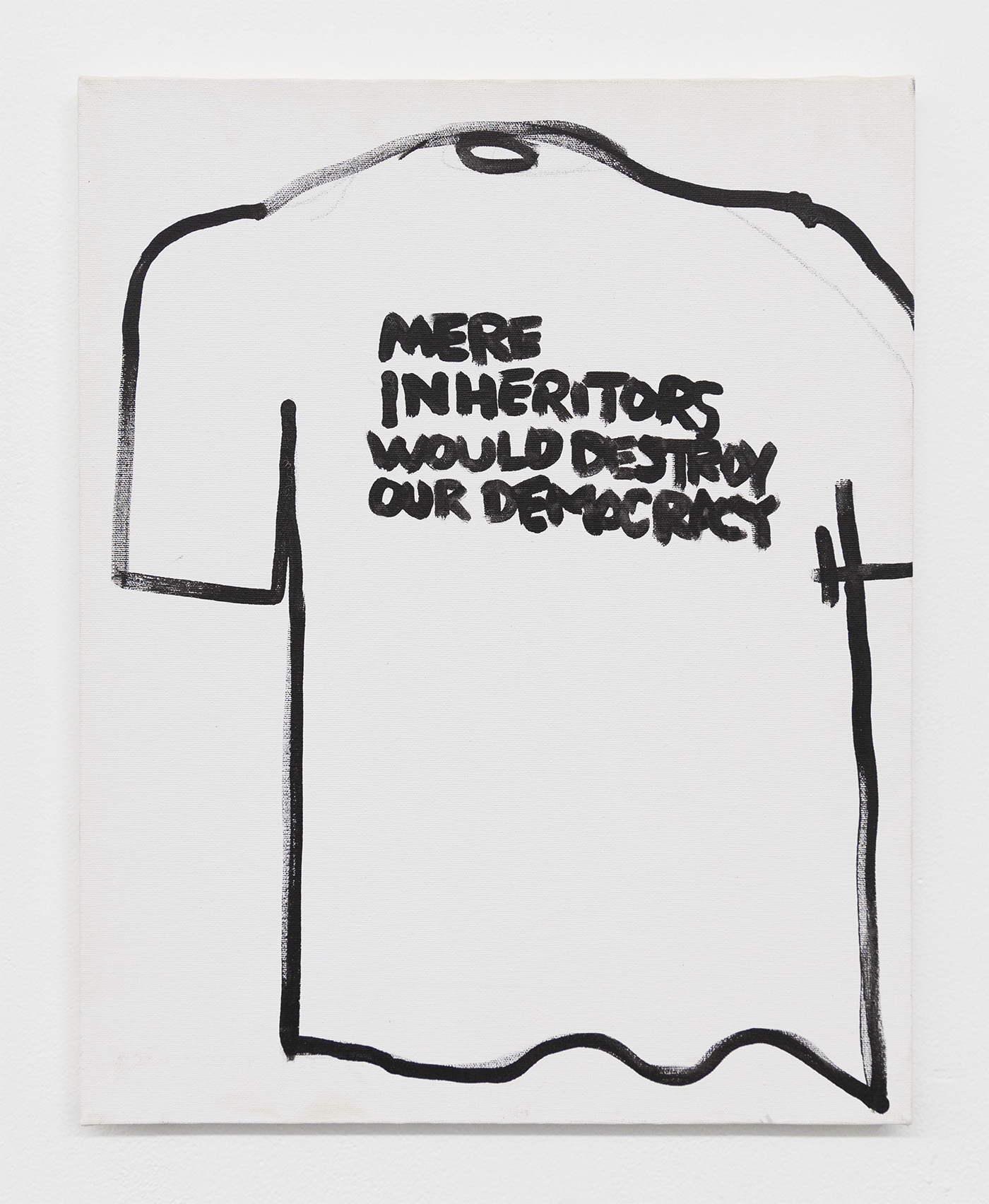
‘Mere Inheritors’, 2000s
acrylic and graphite on canvas
20 × 16 inches
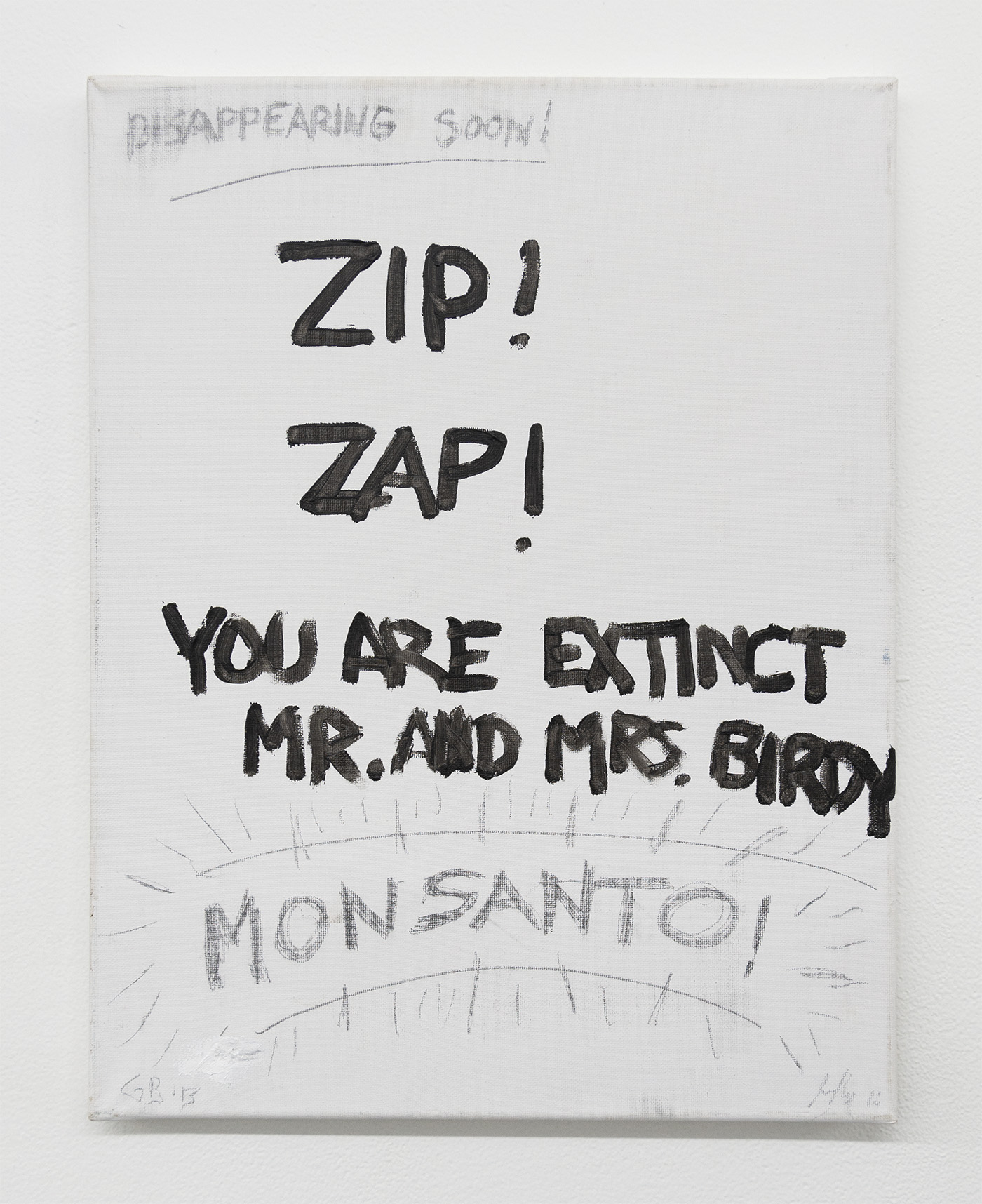
‘Zip! Zap! You Are Extinct Mr. and Mrs. Birdy’, 2013-2016
acrylic and graphite on canvas
18 × 14 inches
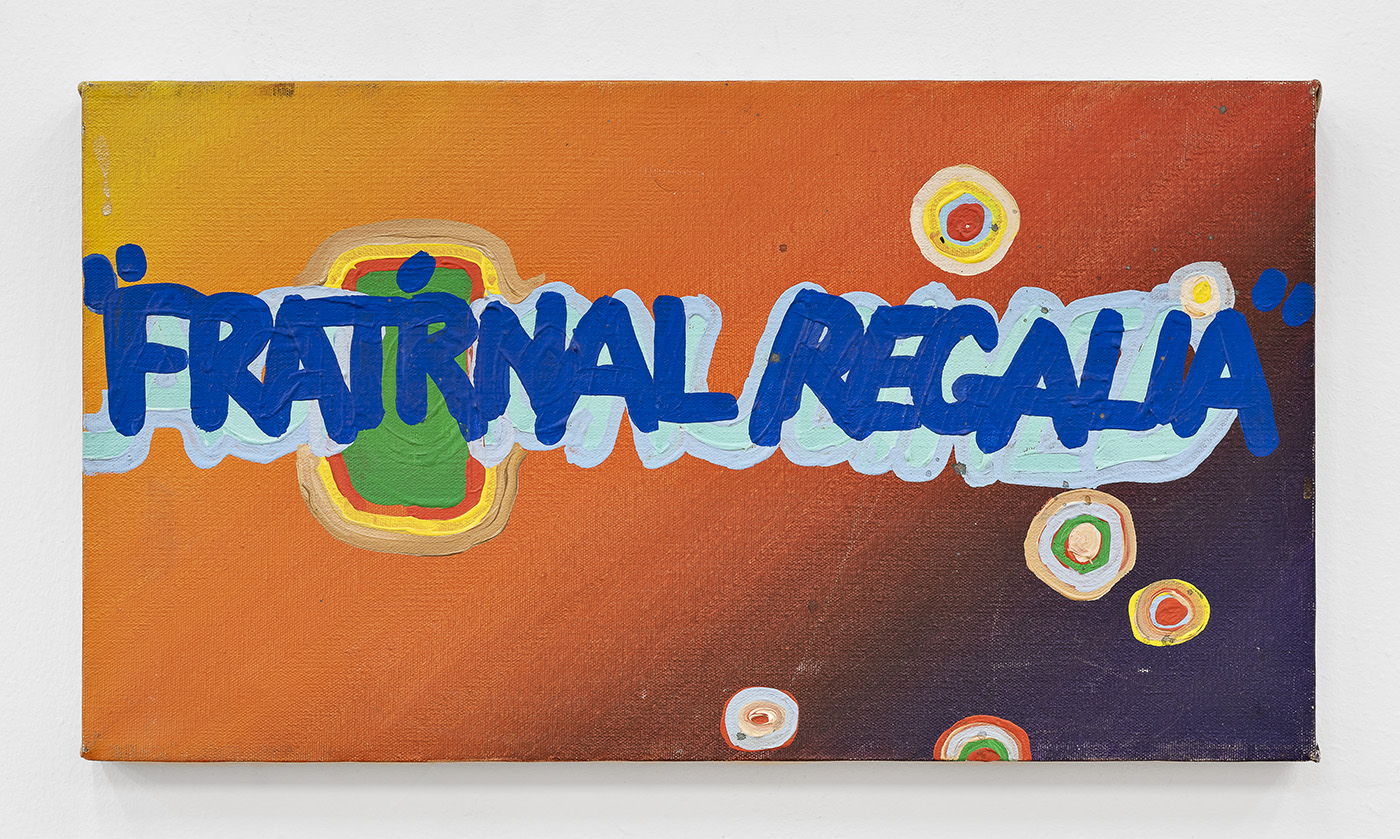
‘Frat’rnal Regalia’, 1970s
acrylic on canvas
11 × 20 inches
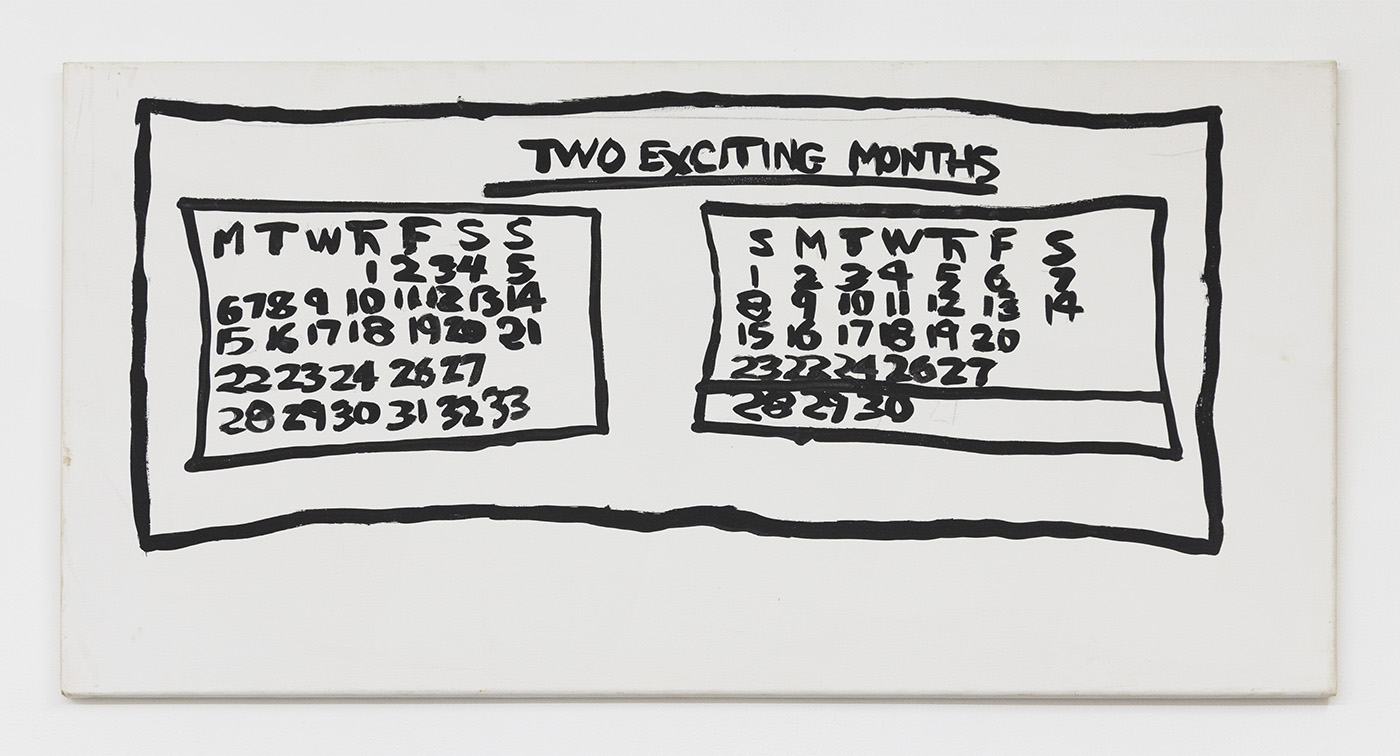
‘Two Exciting Months’, 2000s
acrylic and graphite on canvas
18 × 36 inches
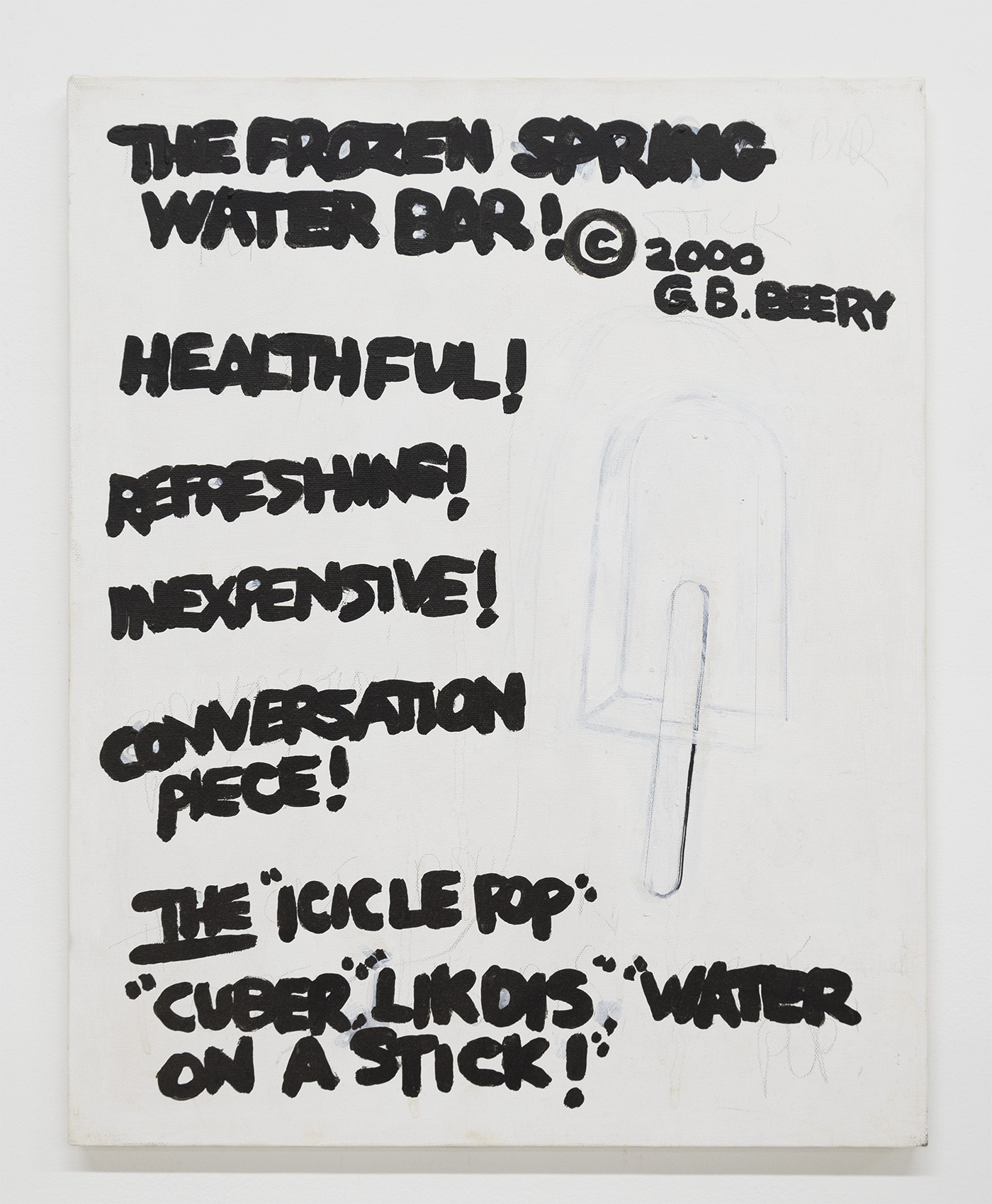
‘The Frozen Spring Water Bar!’, 2000
acrylic and graphite on canvas
20 × 16 inches
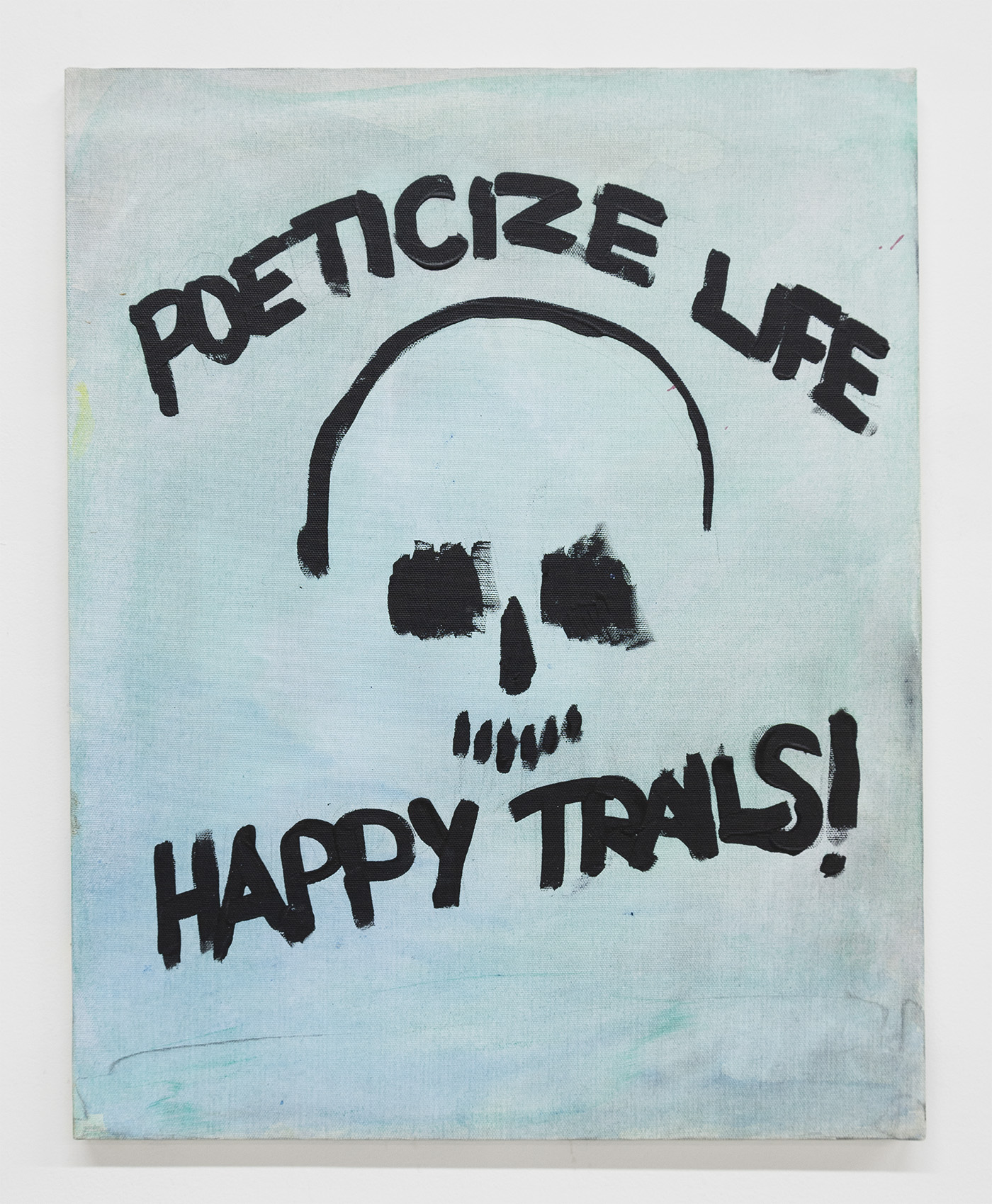
‘Poeticize Life / Happy Trails!’, 2000s
acrylic and graphite on canvas
20 × 16 inches